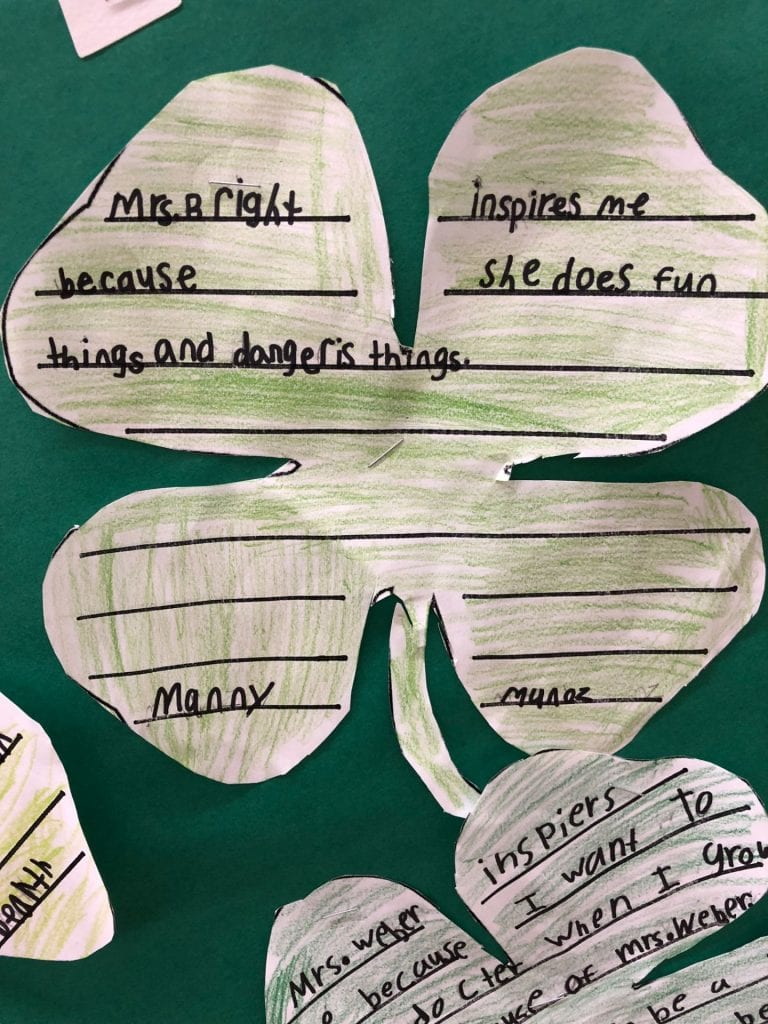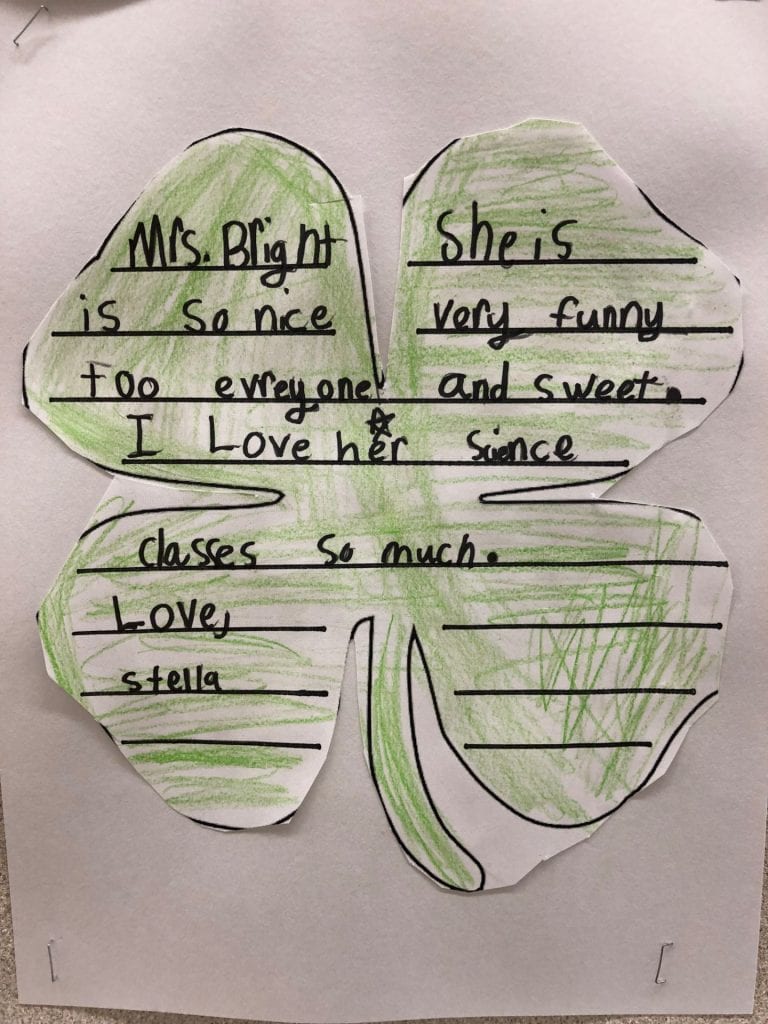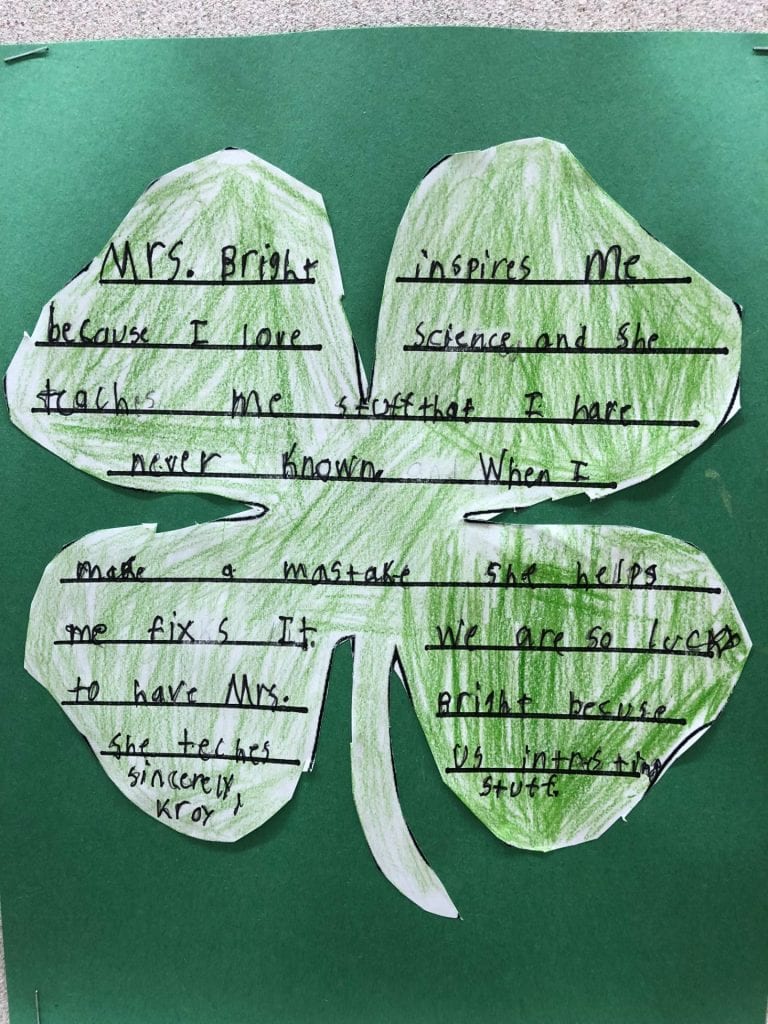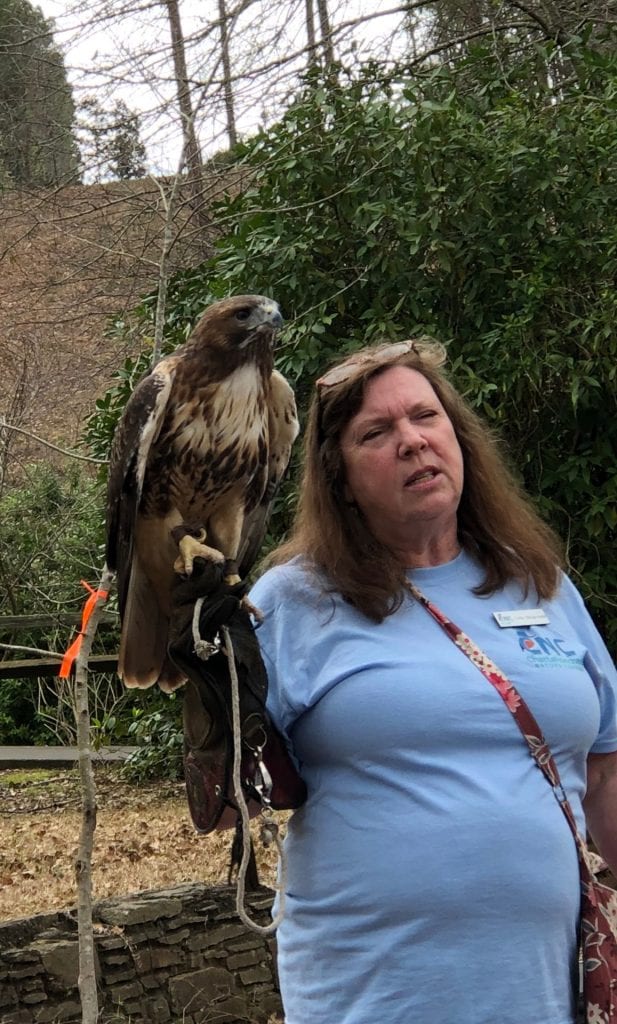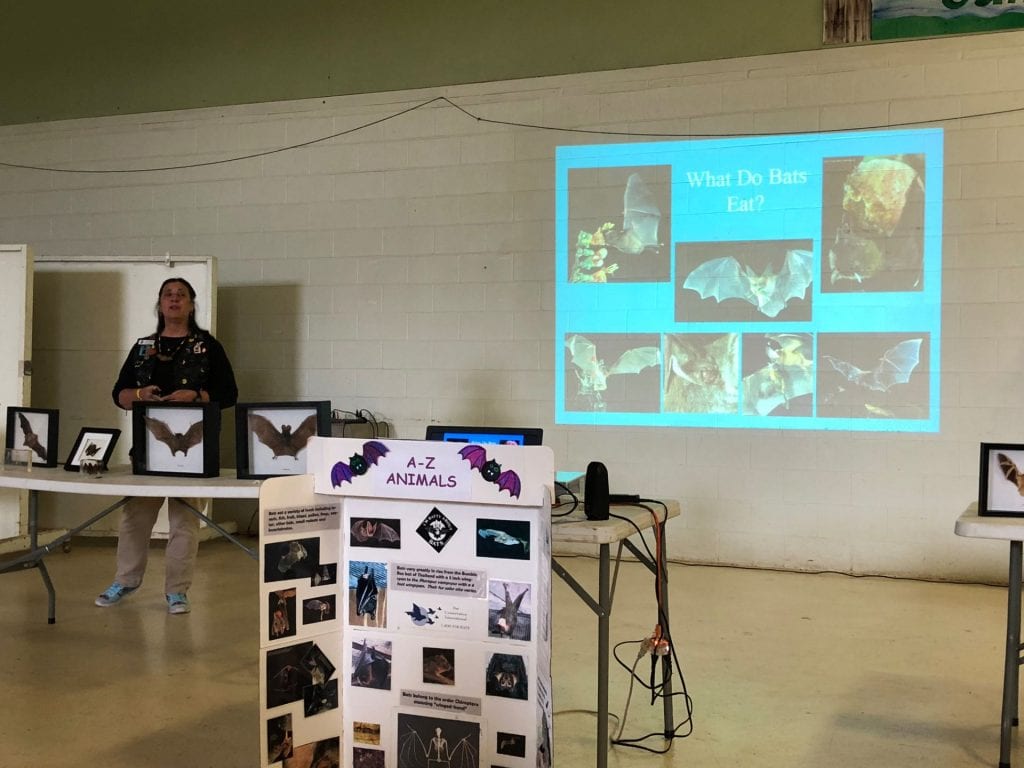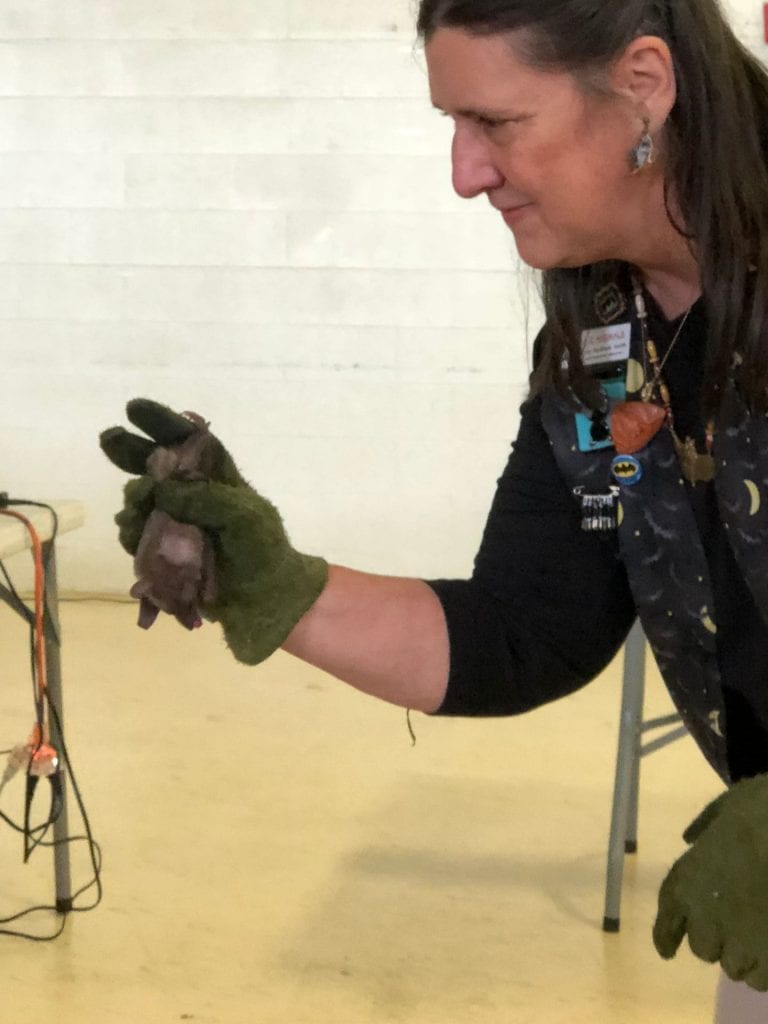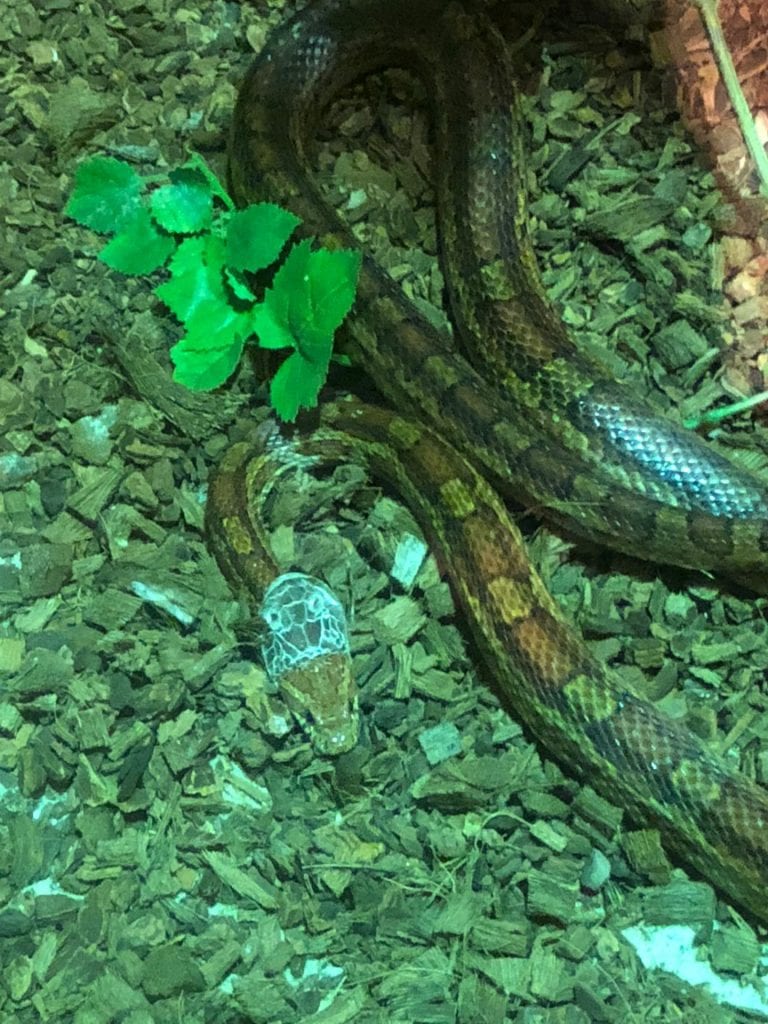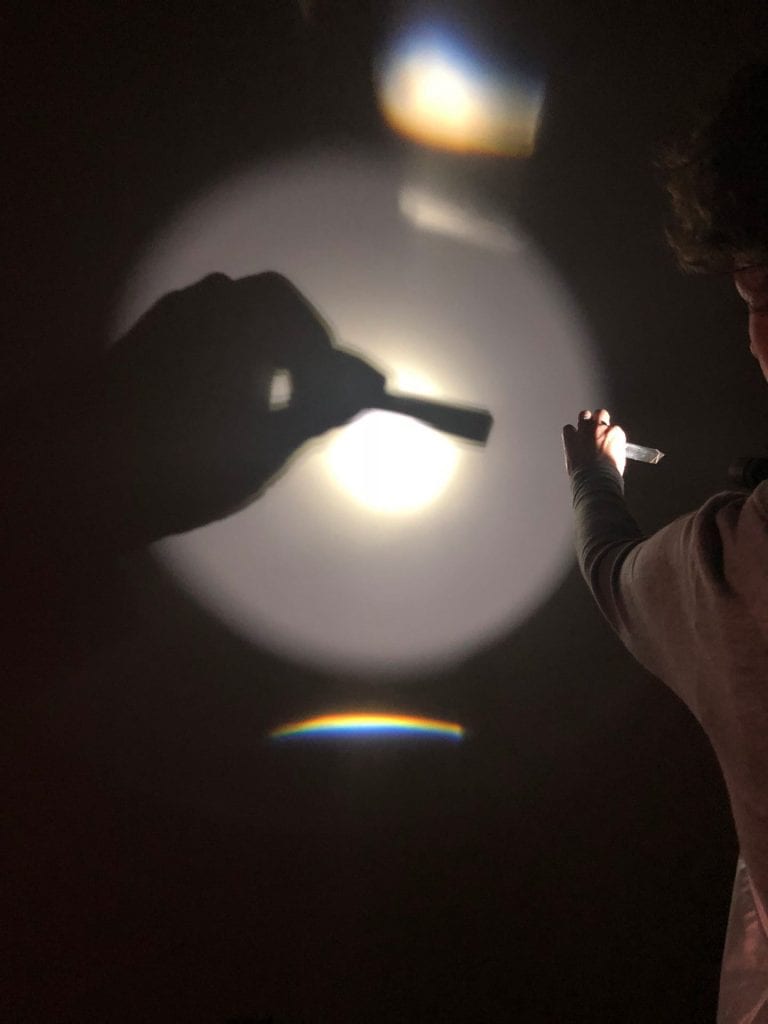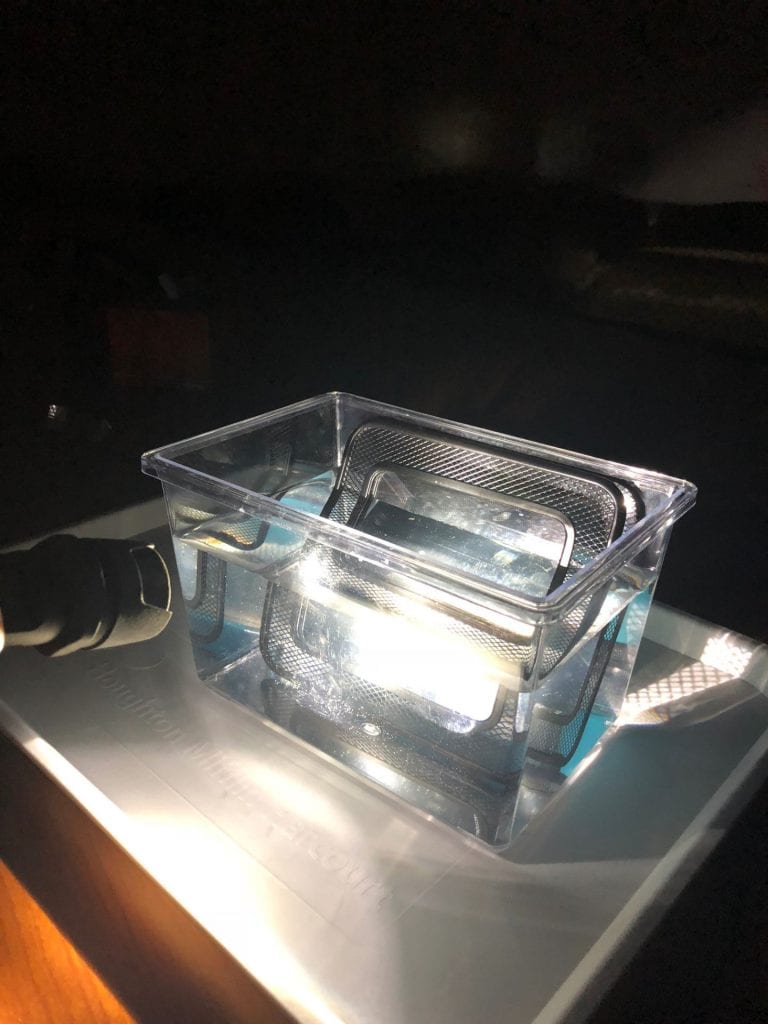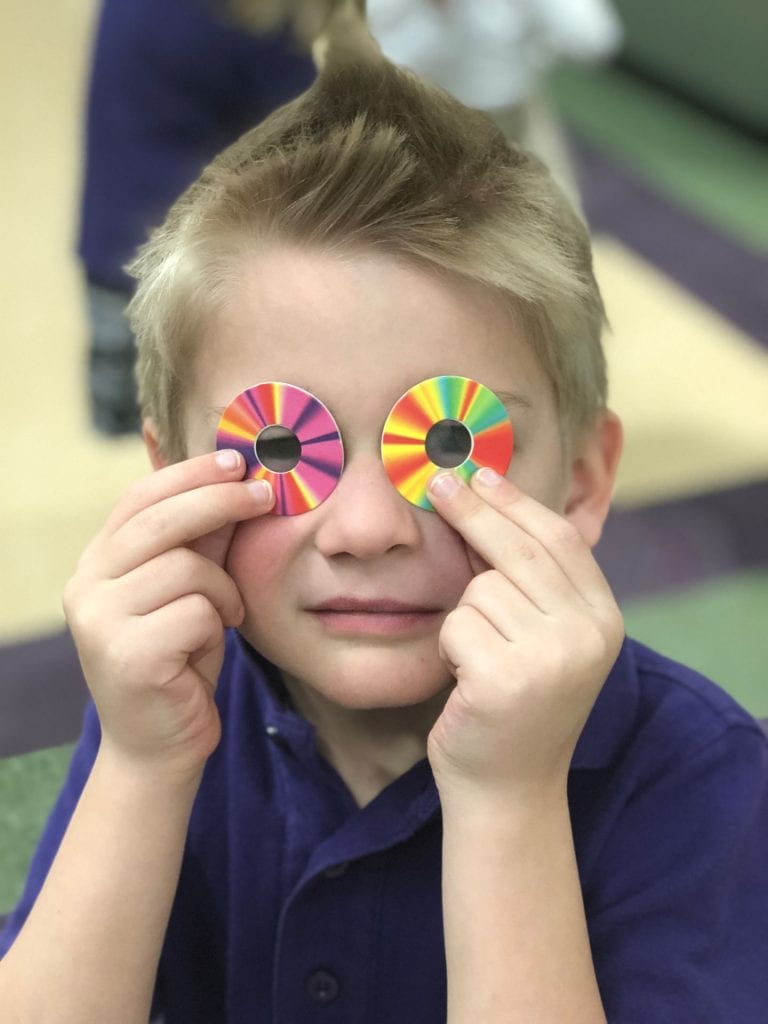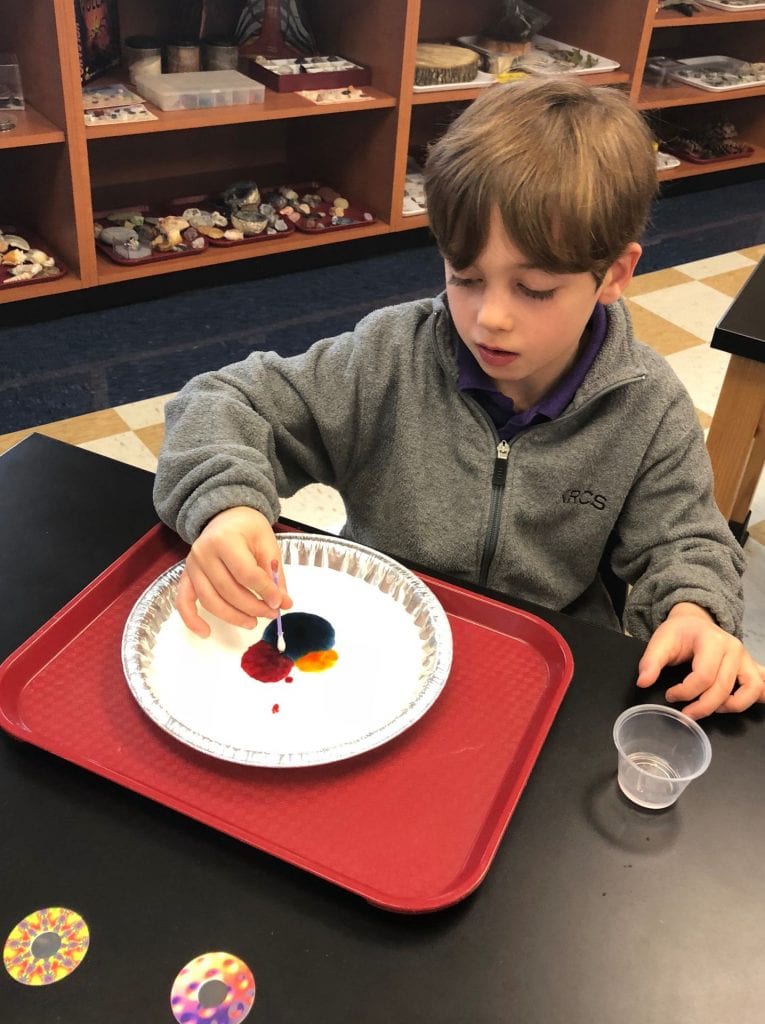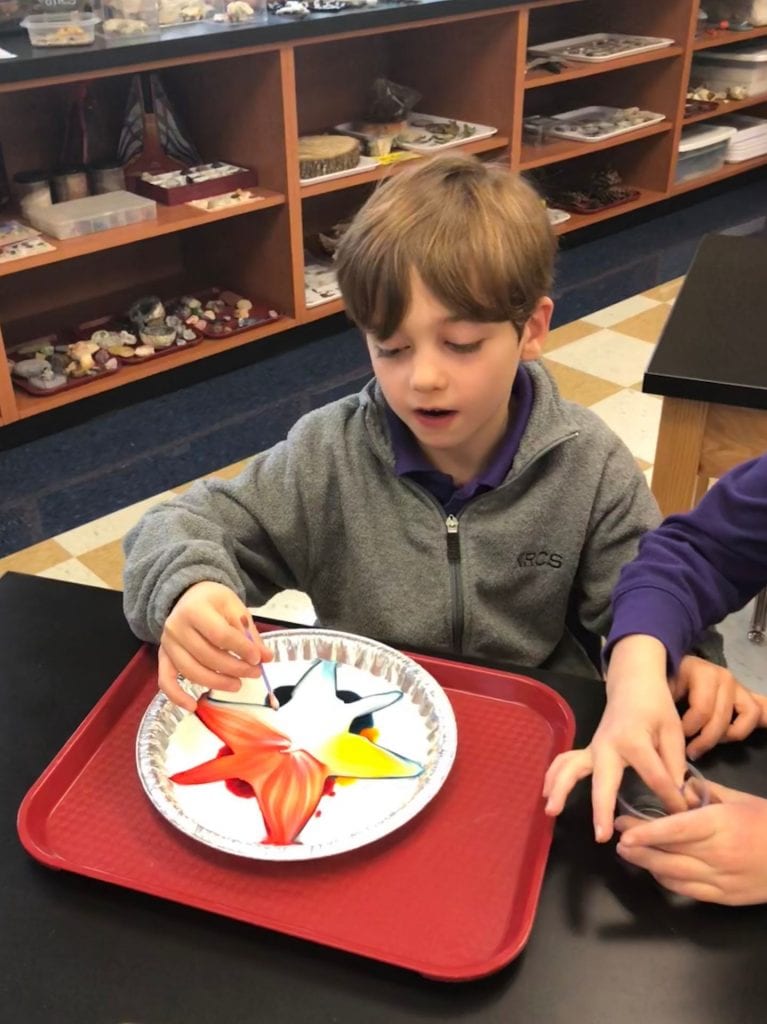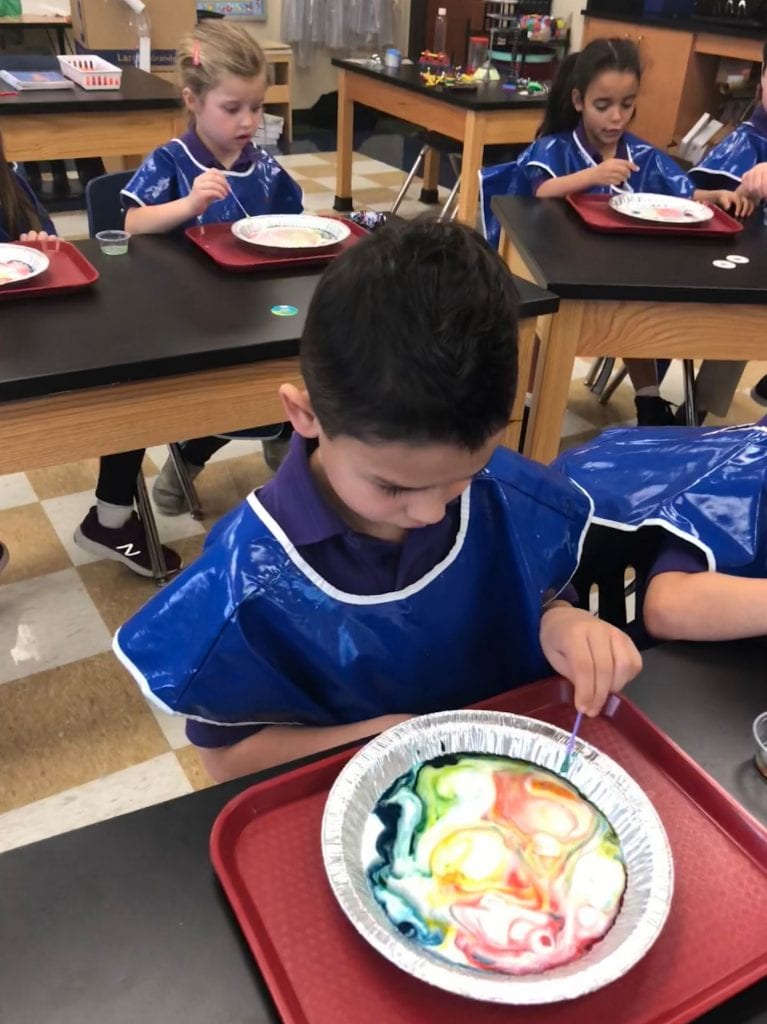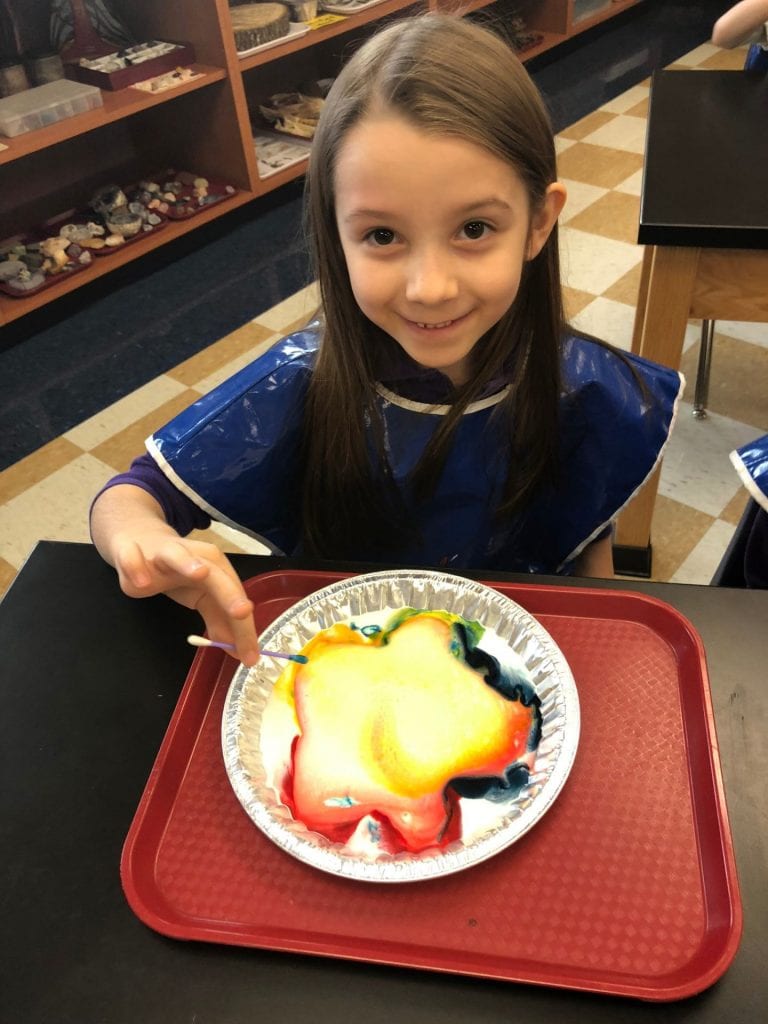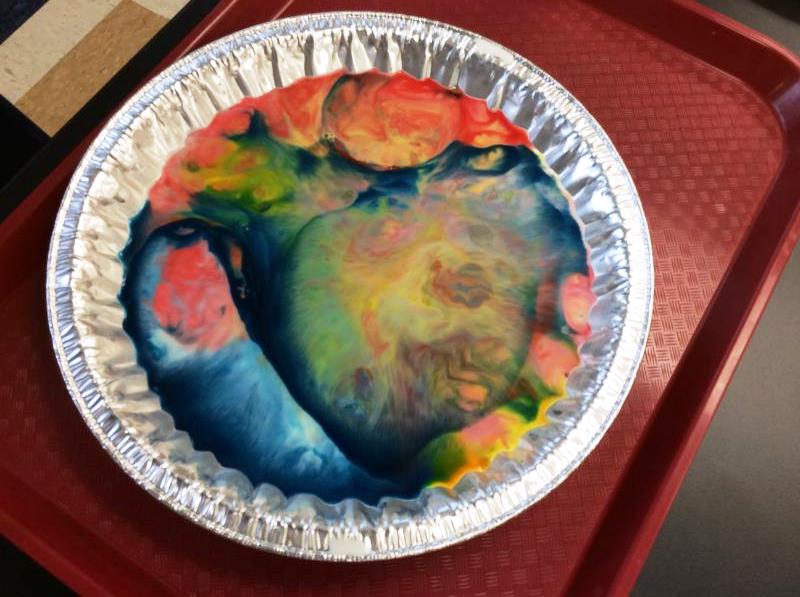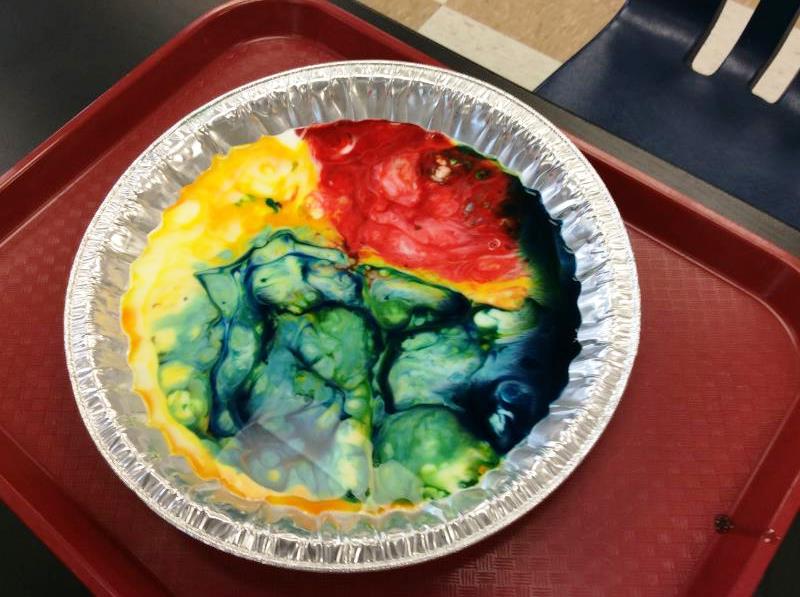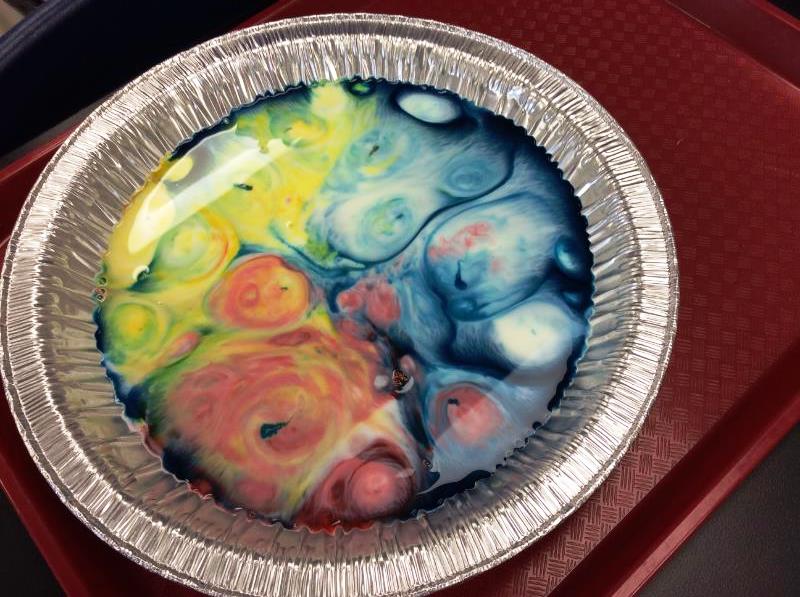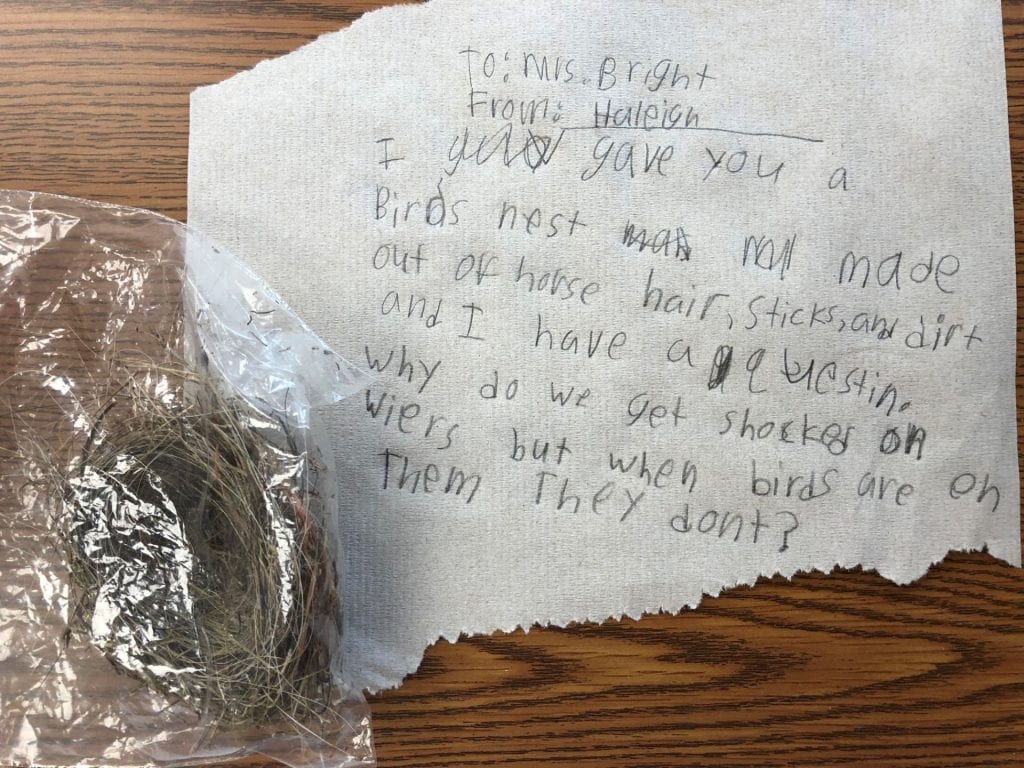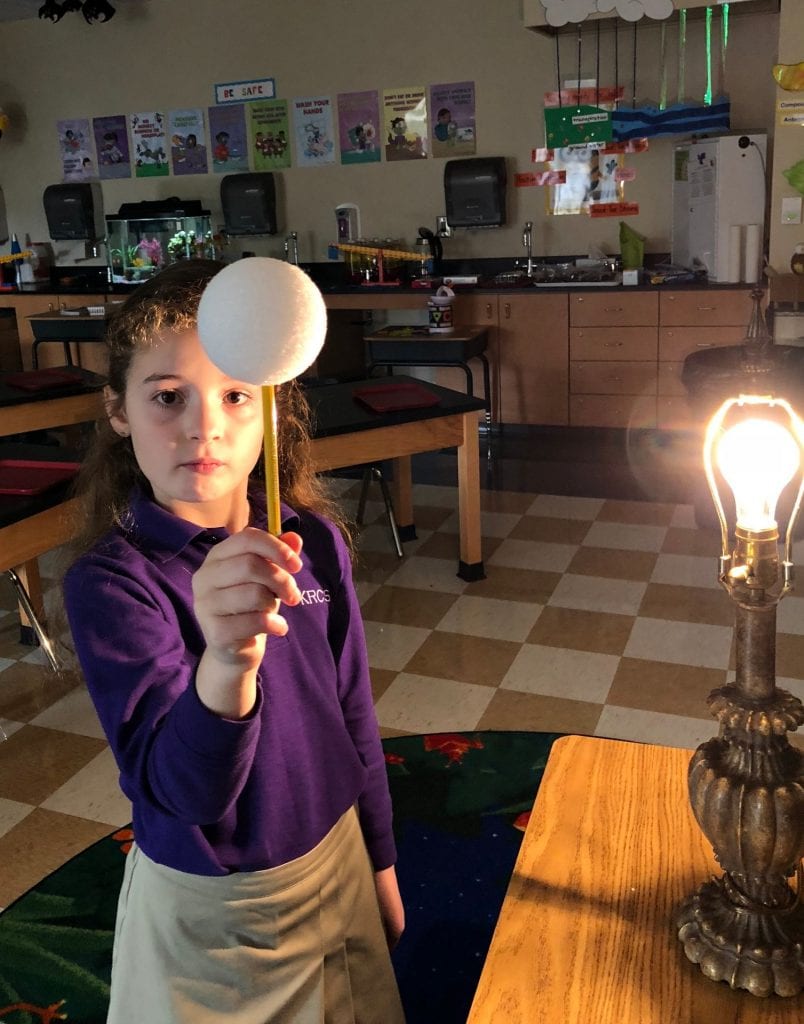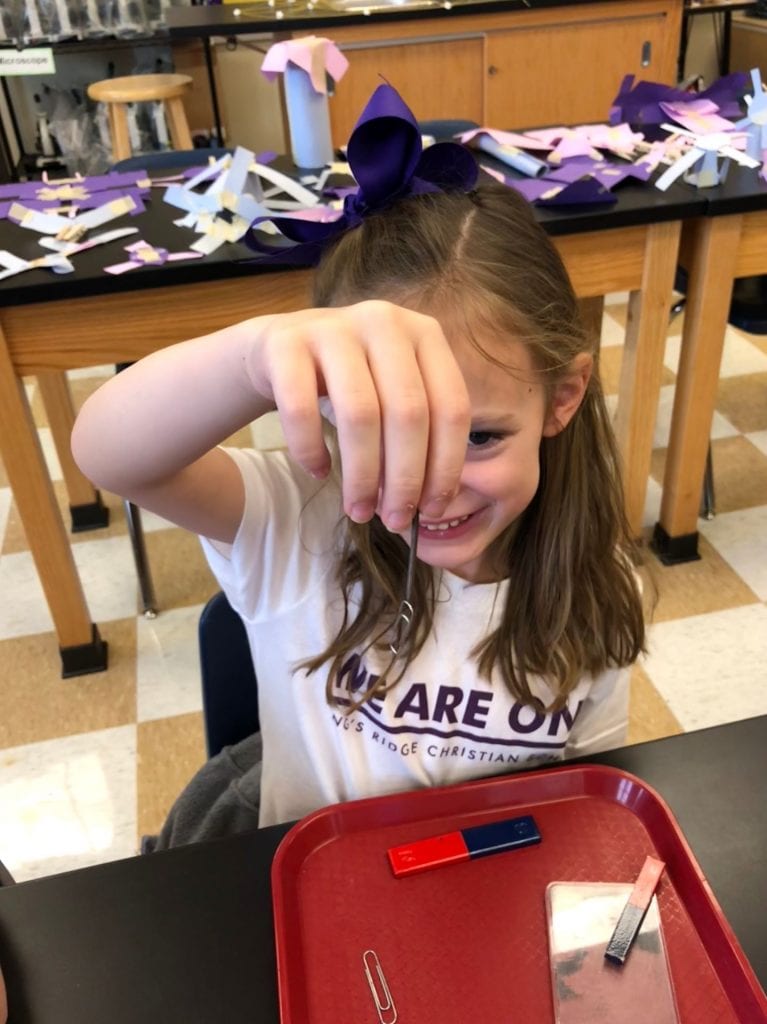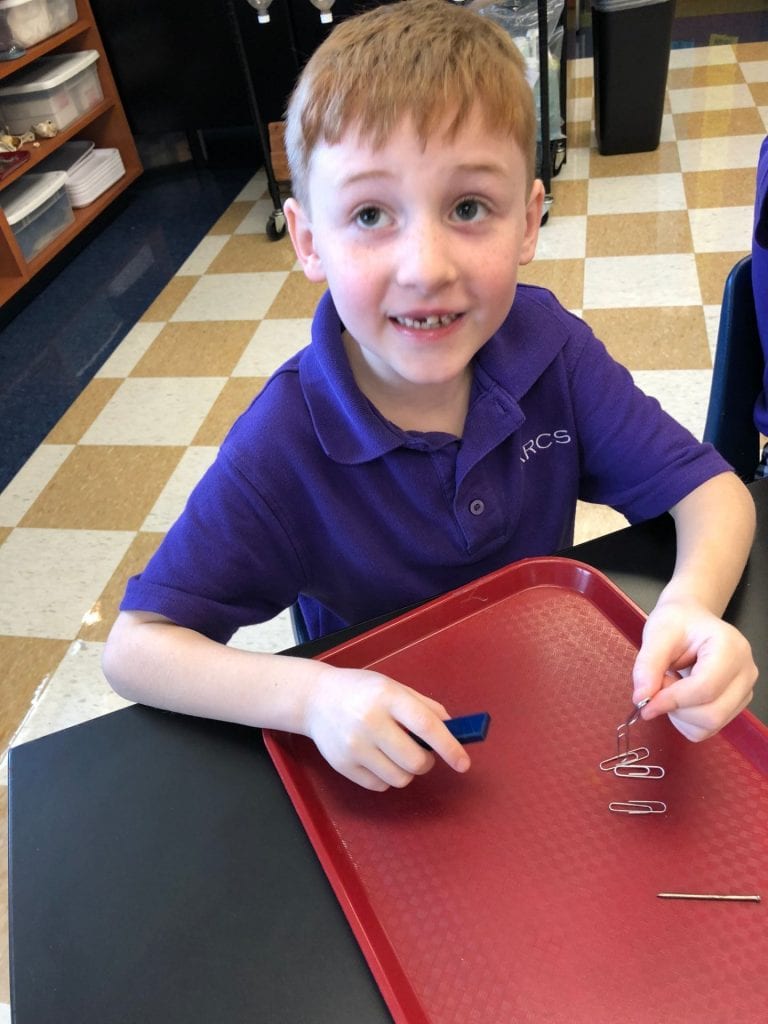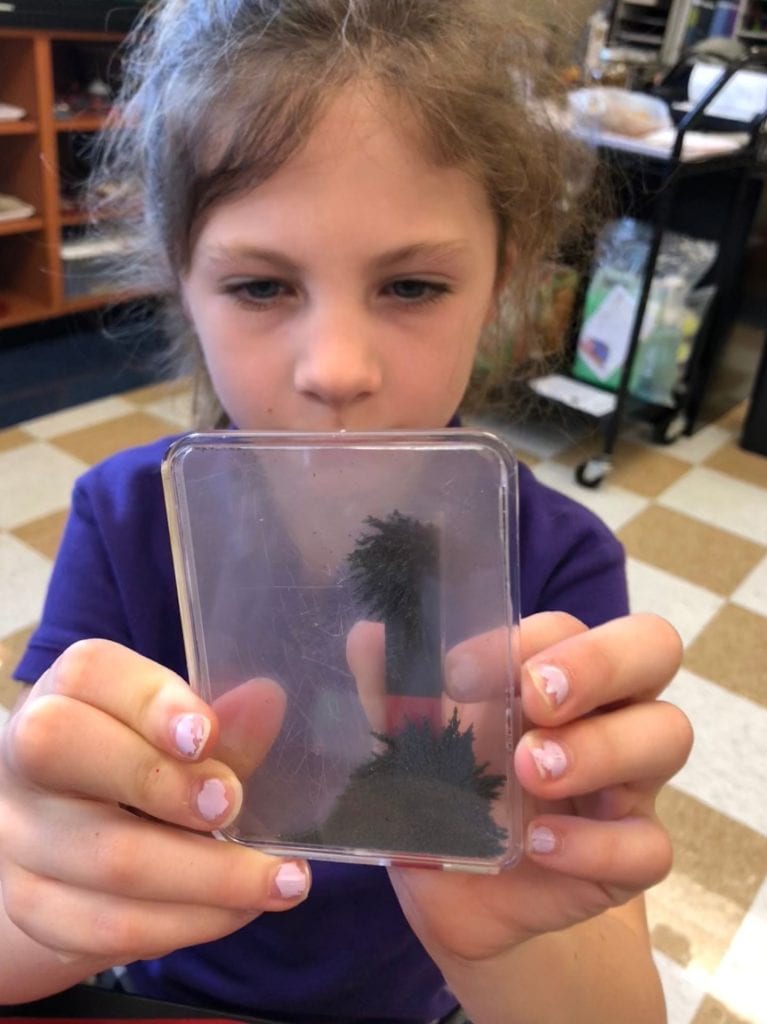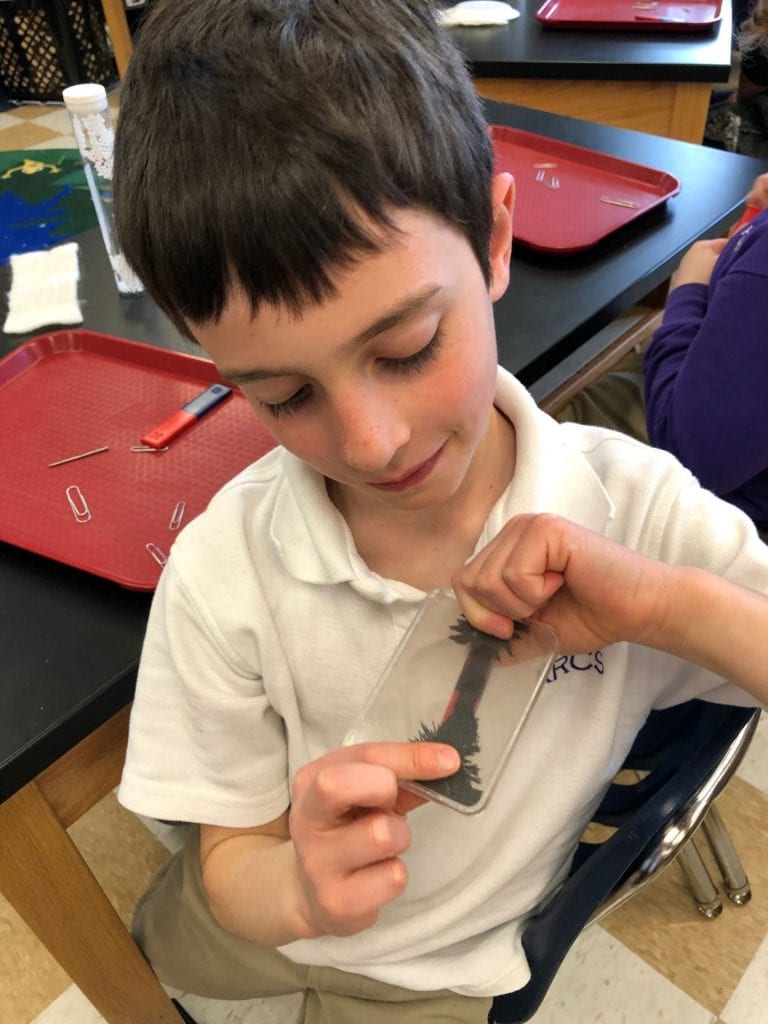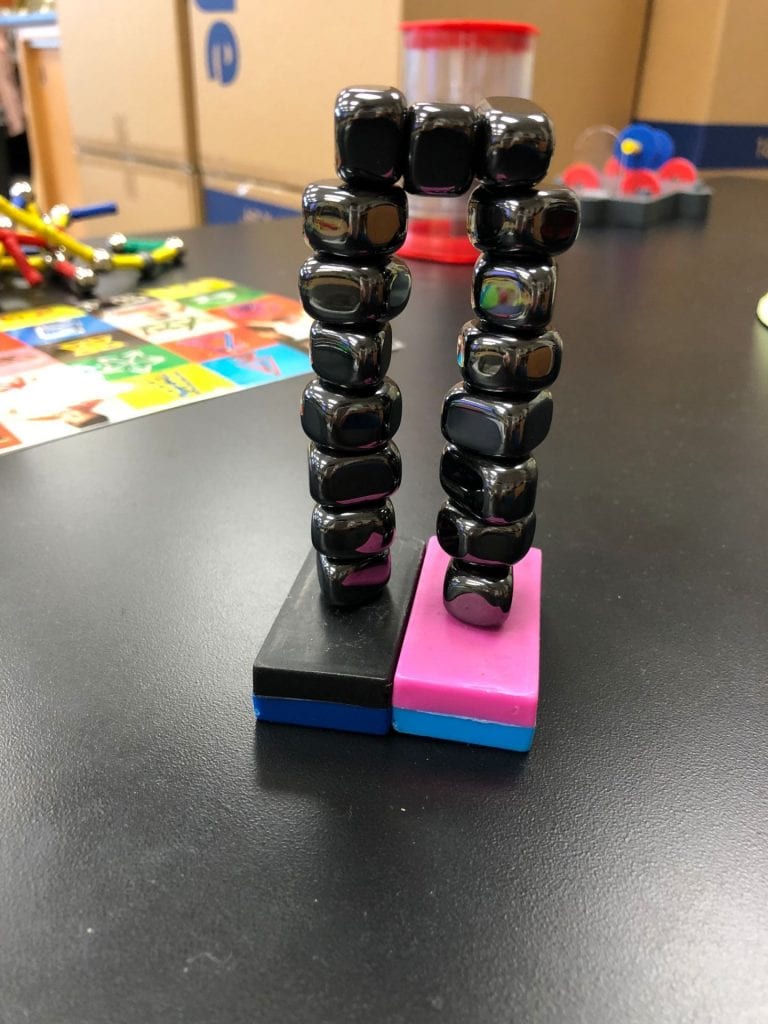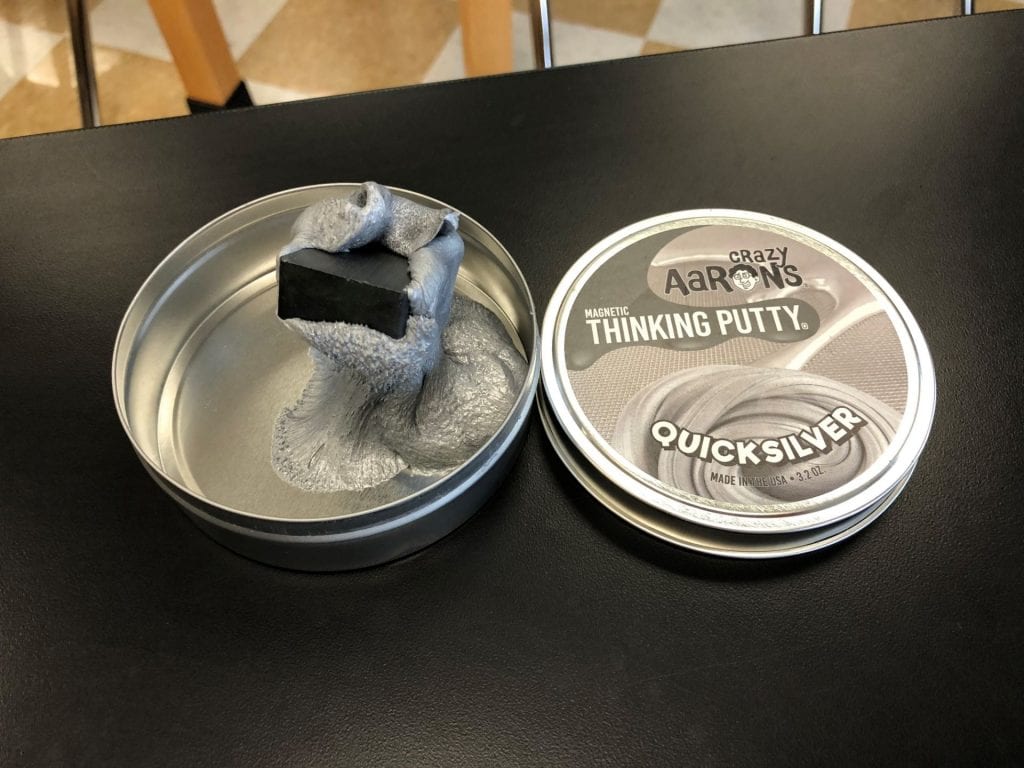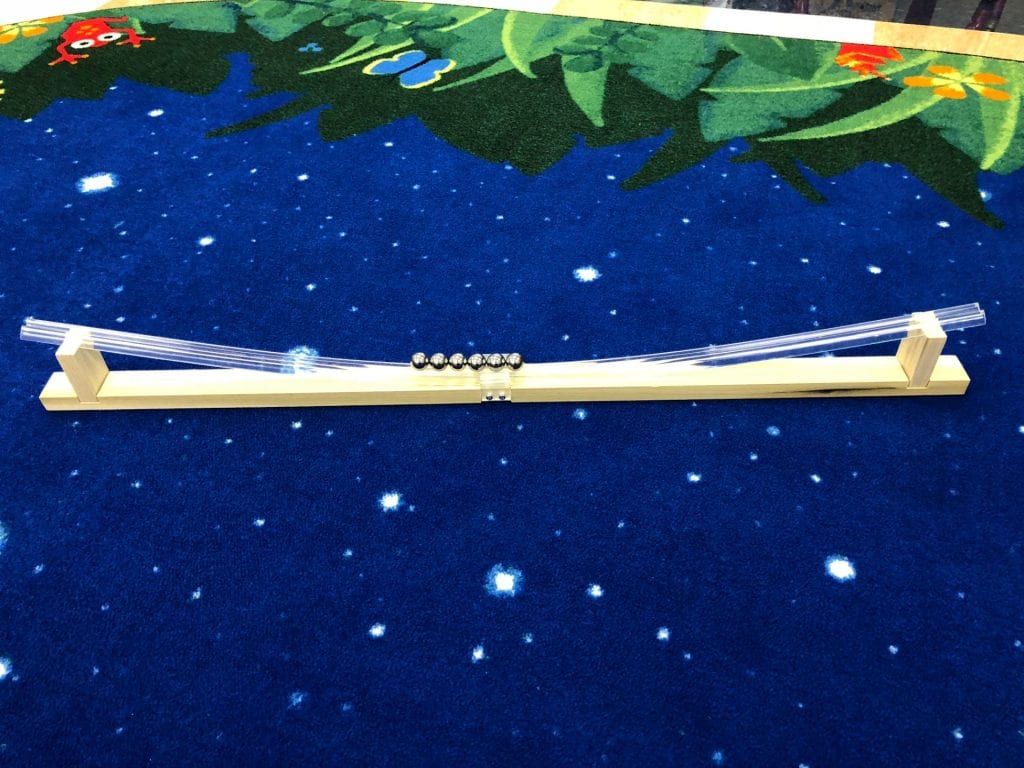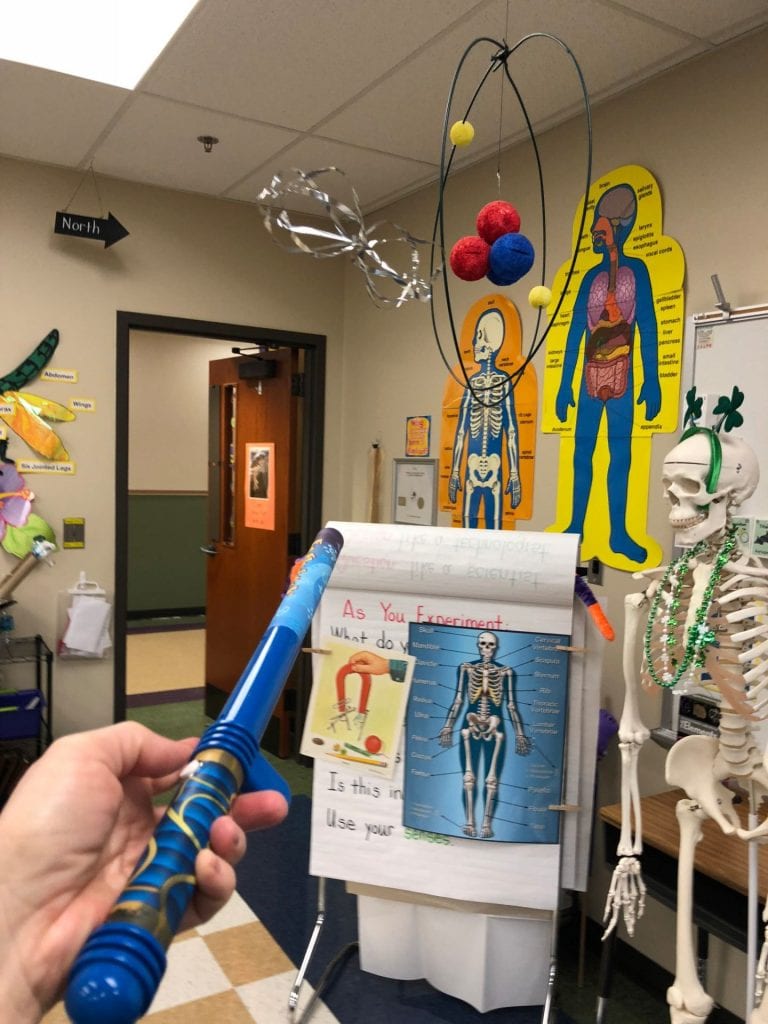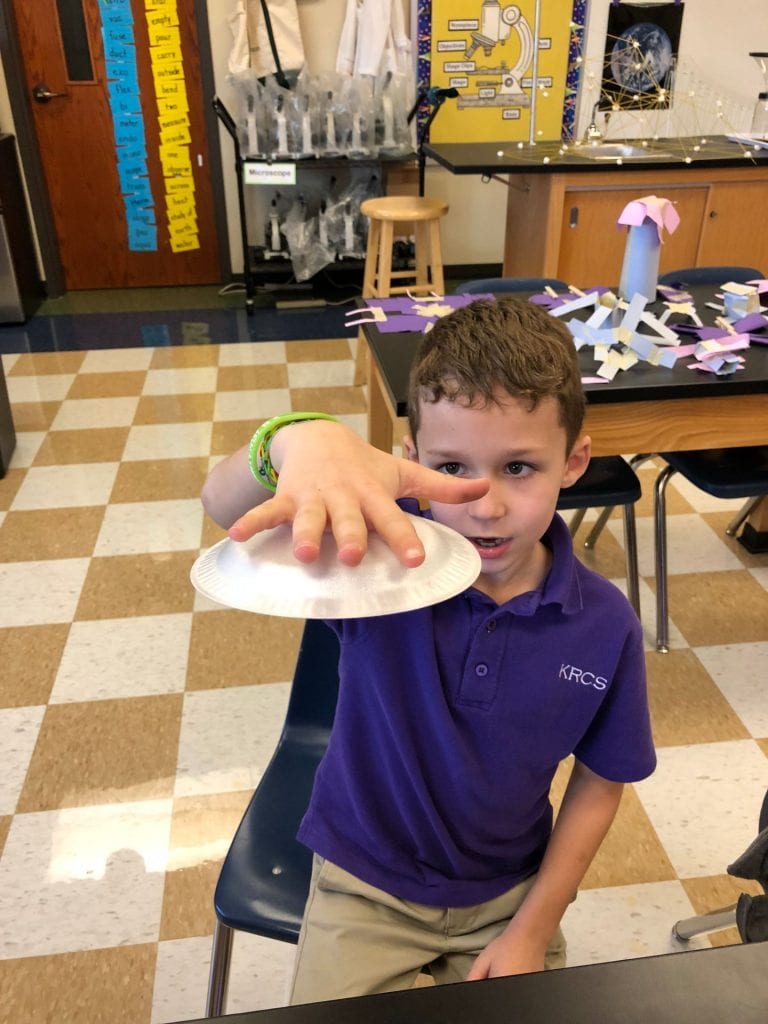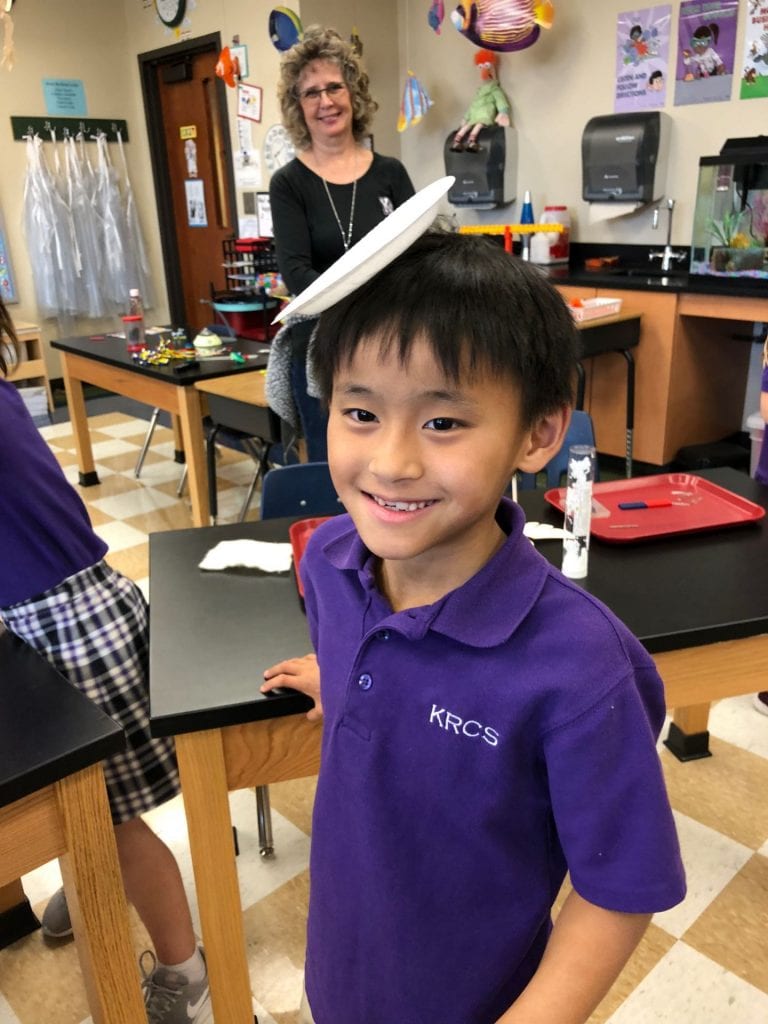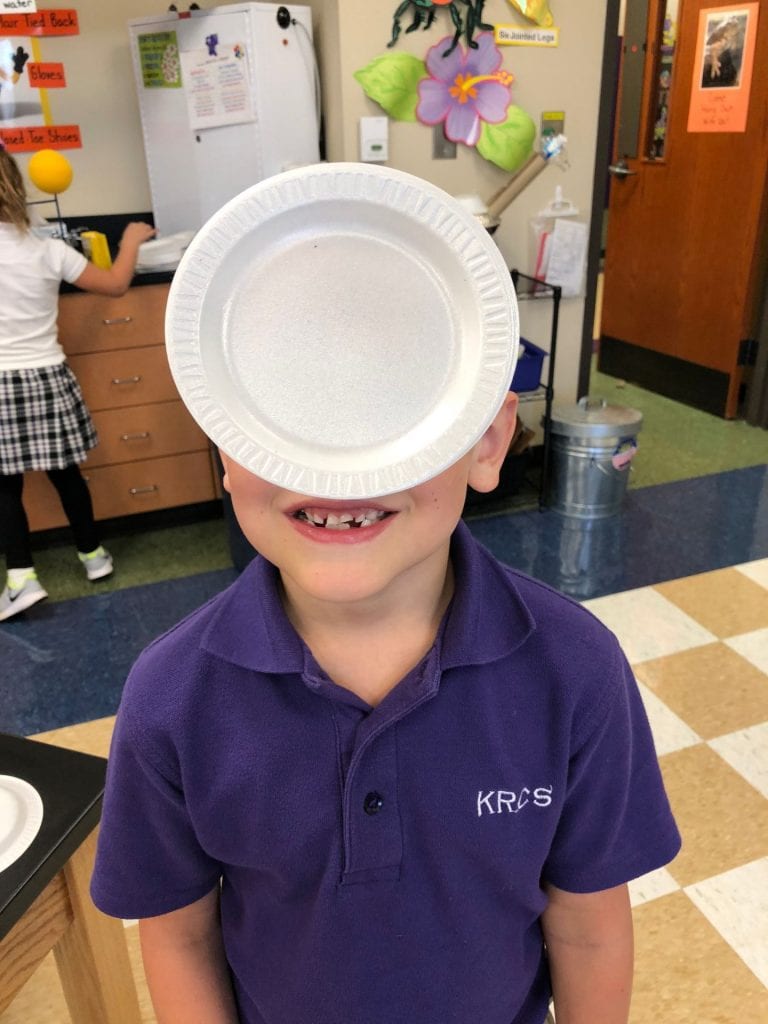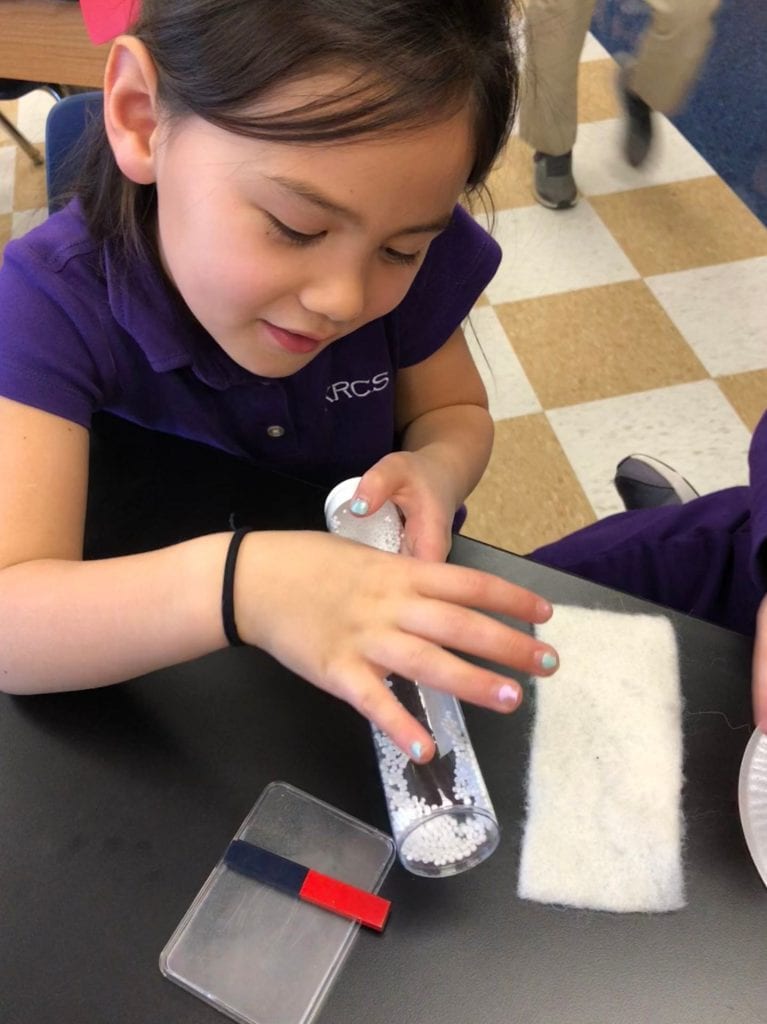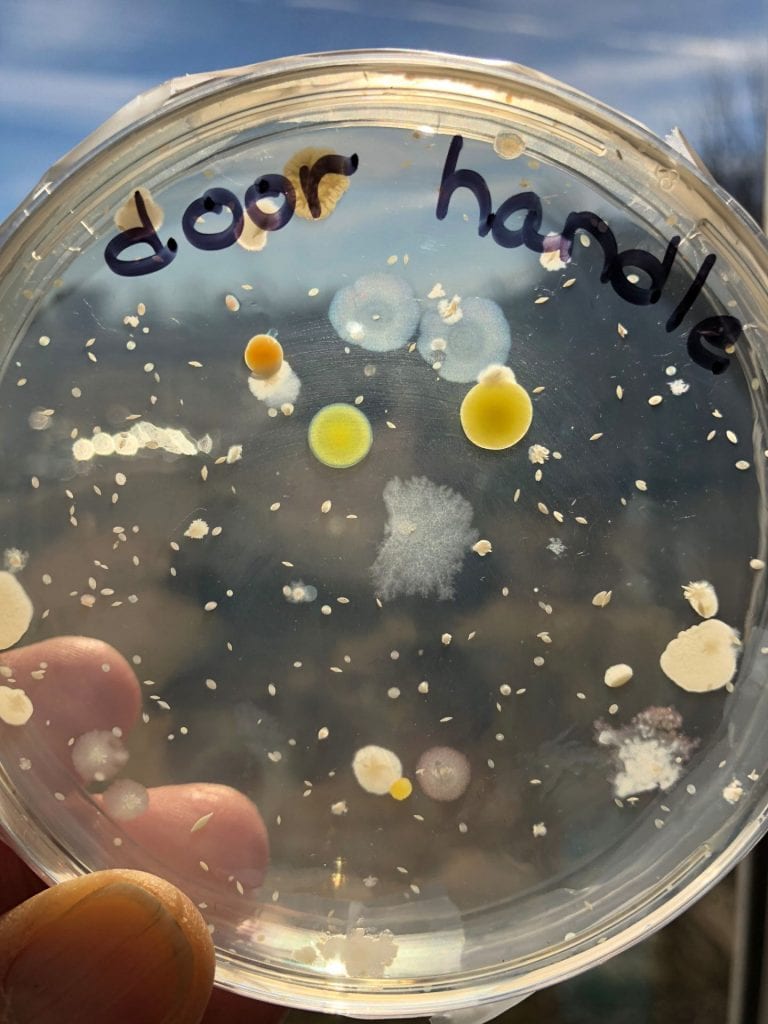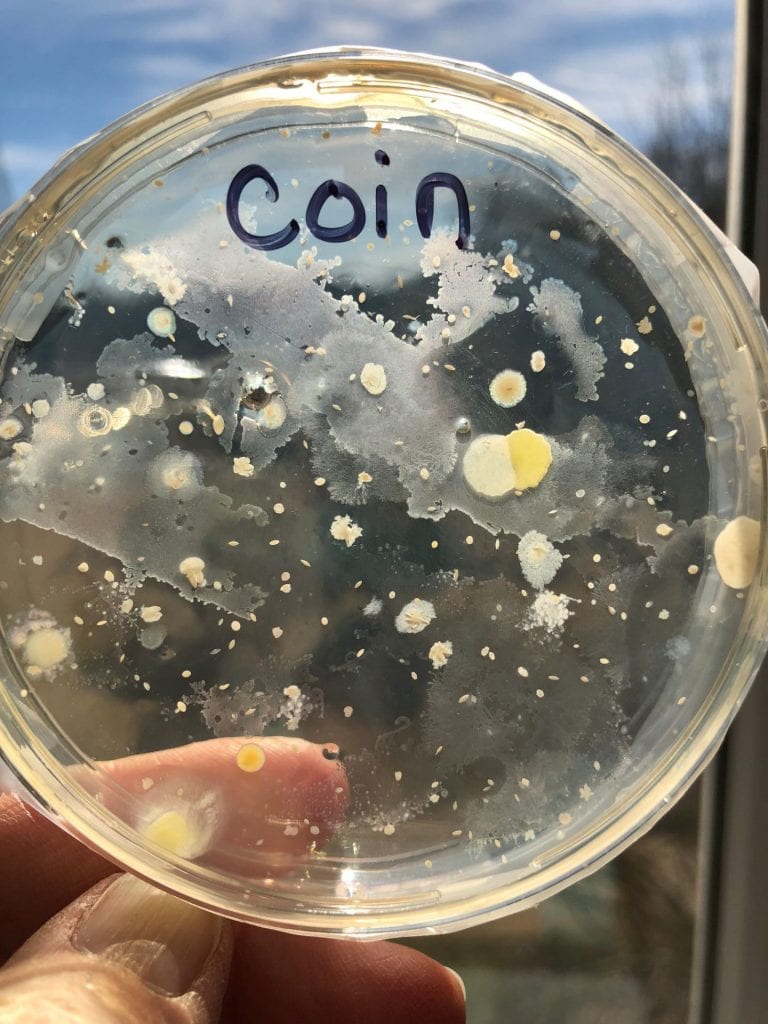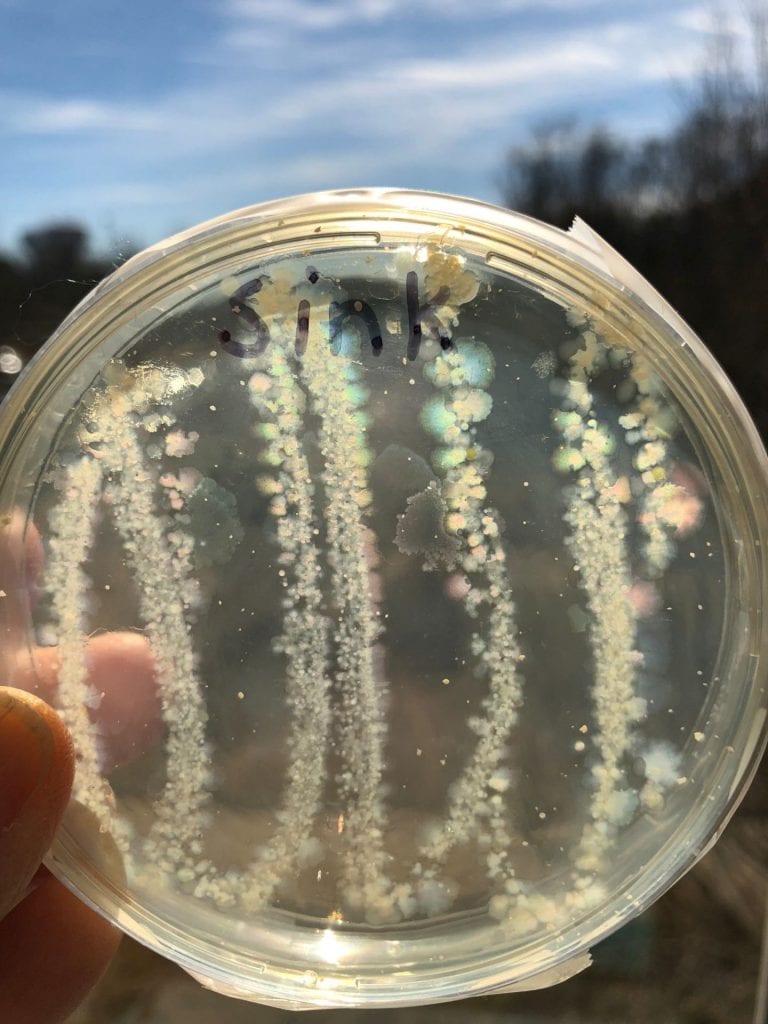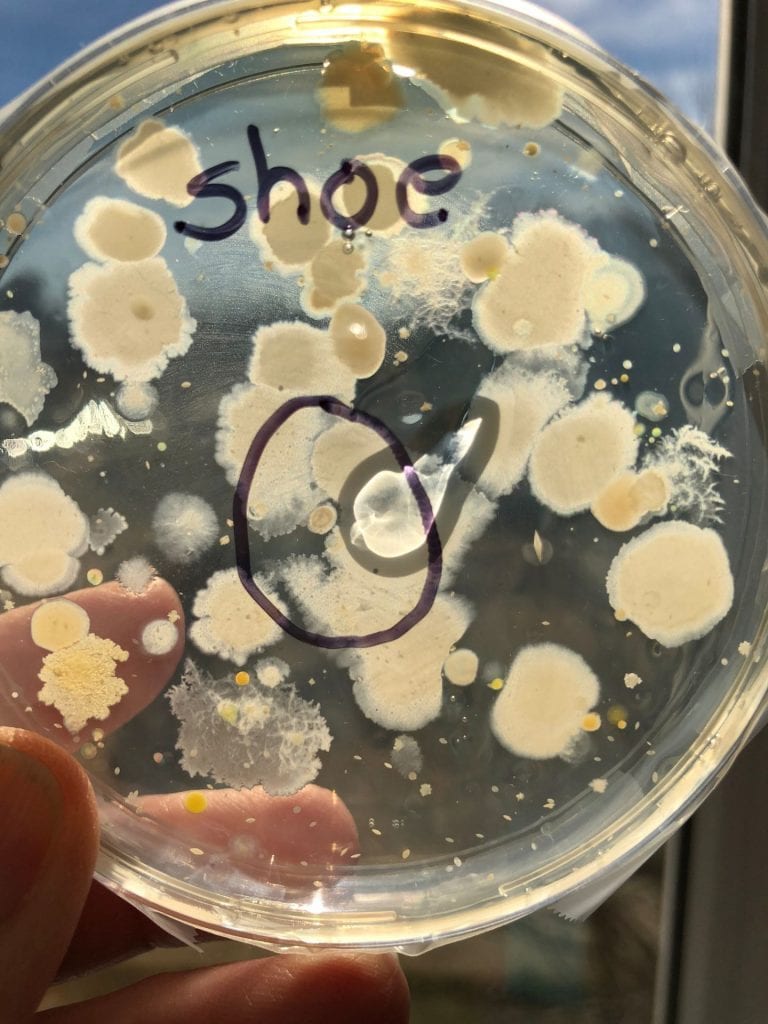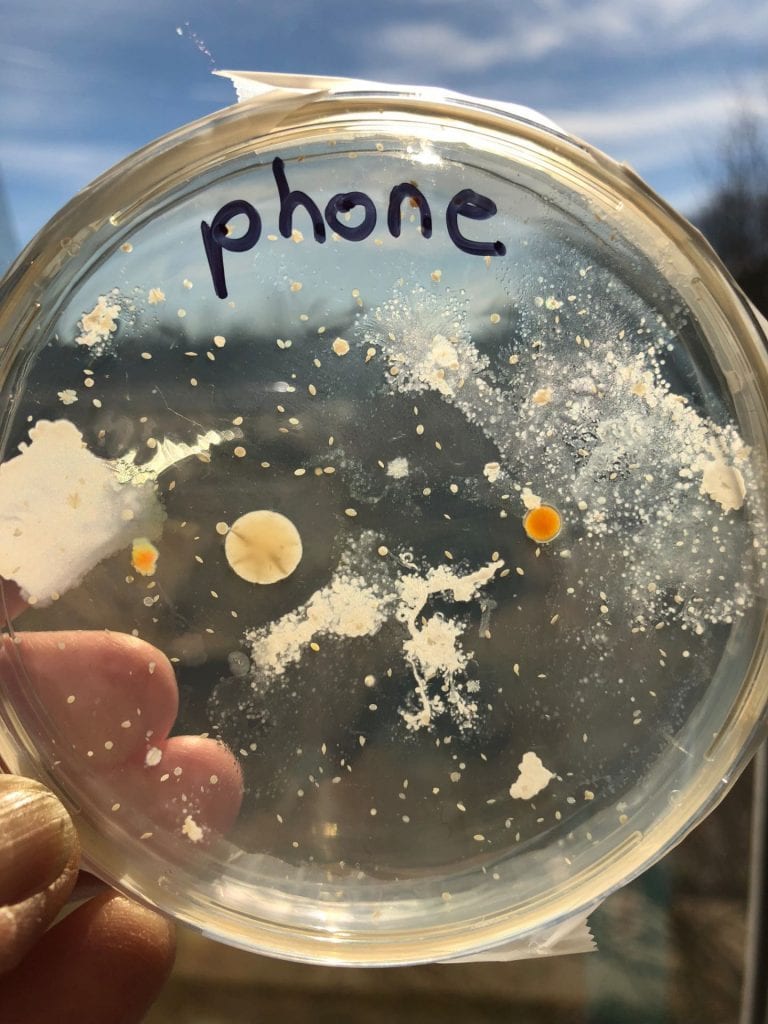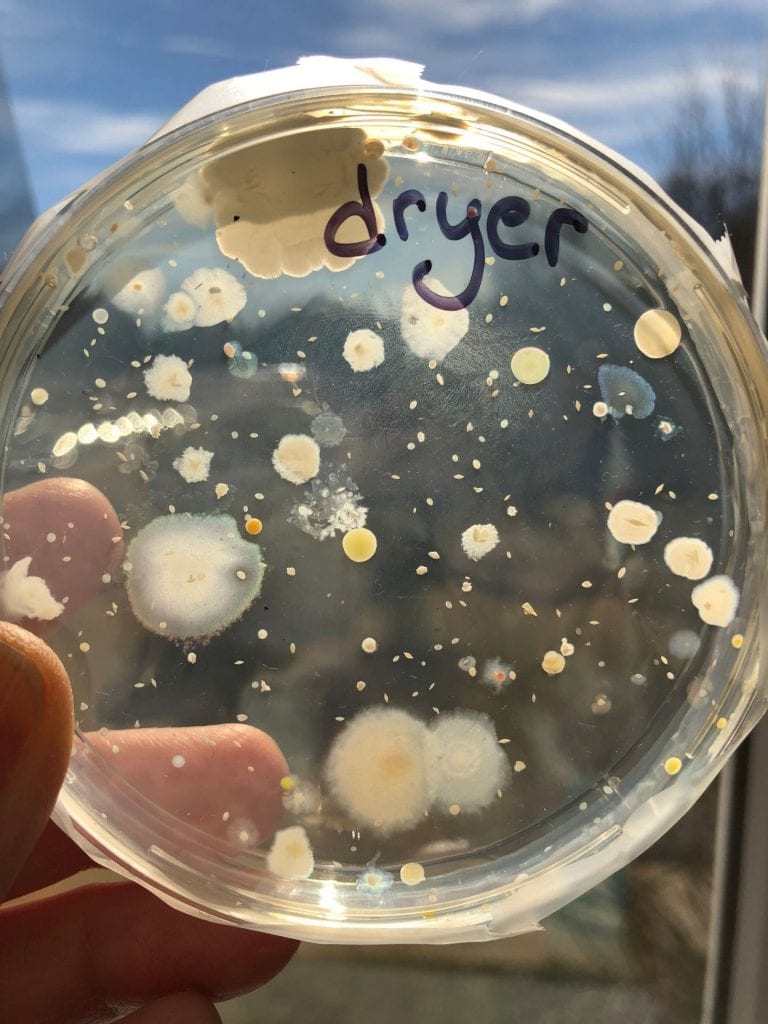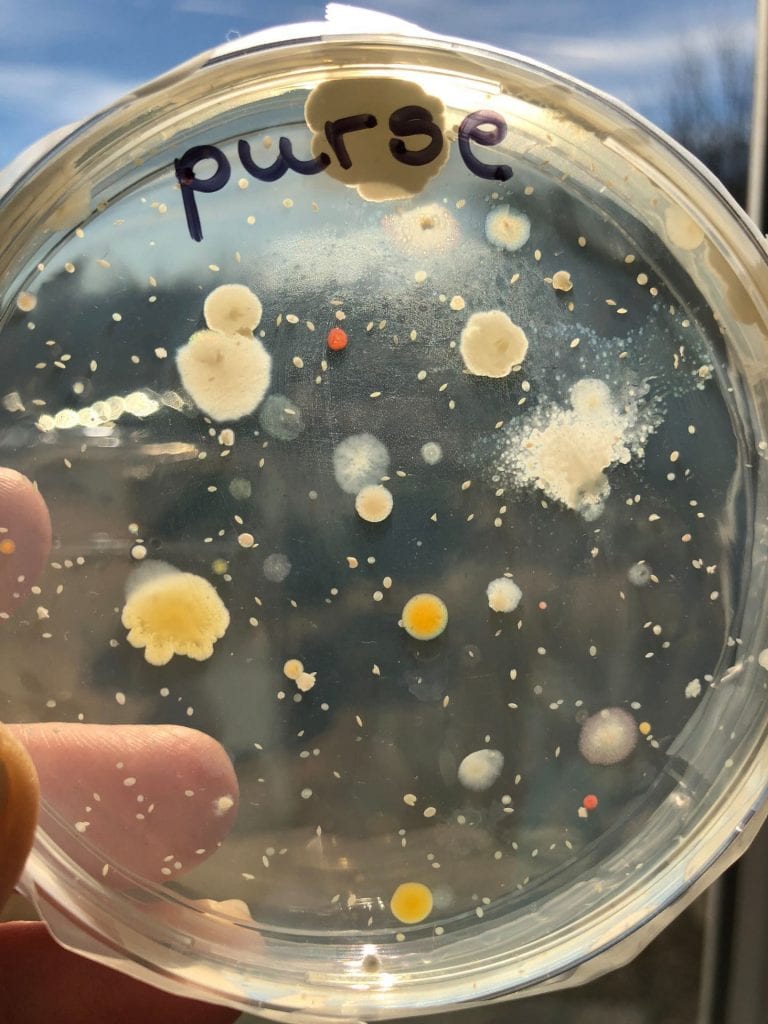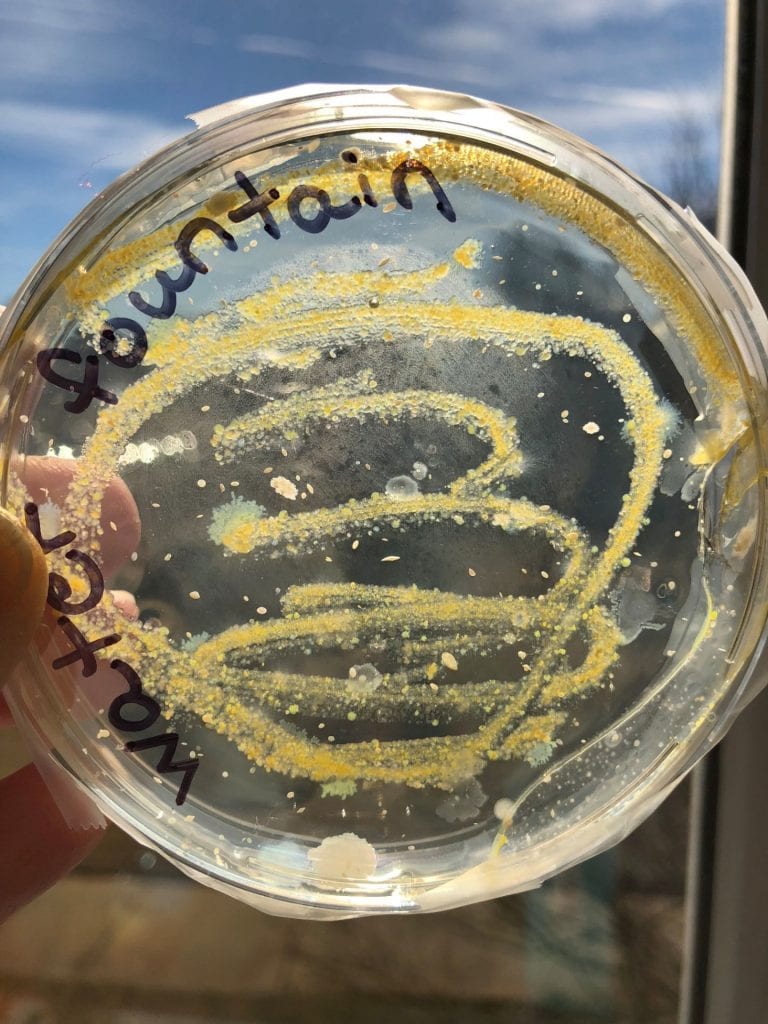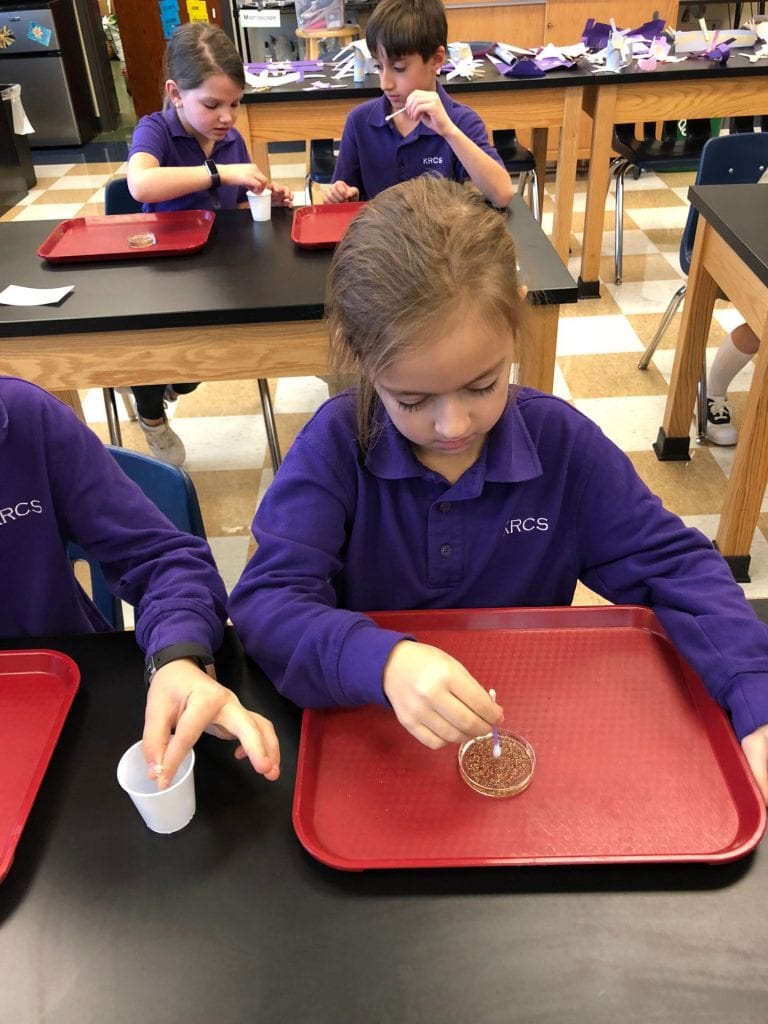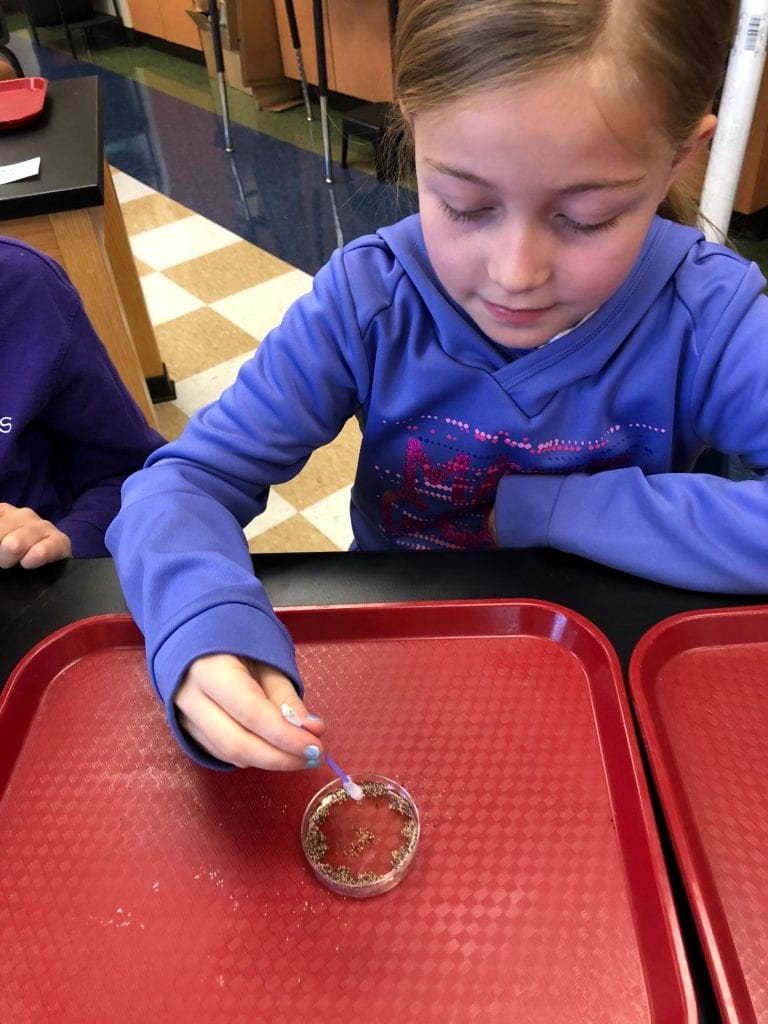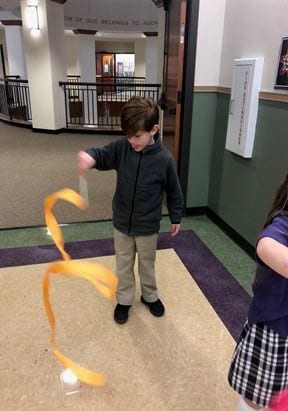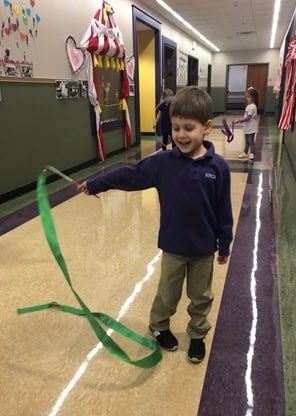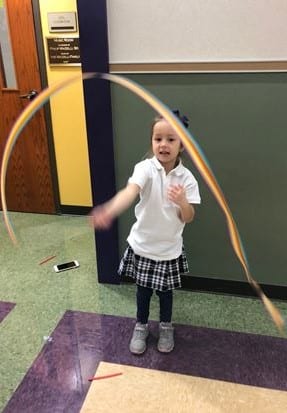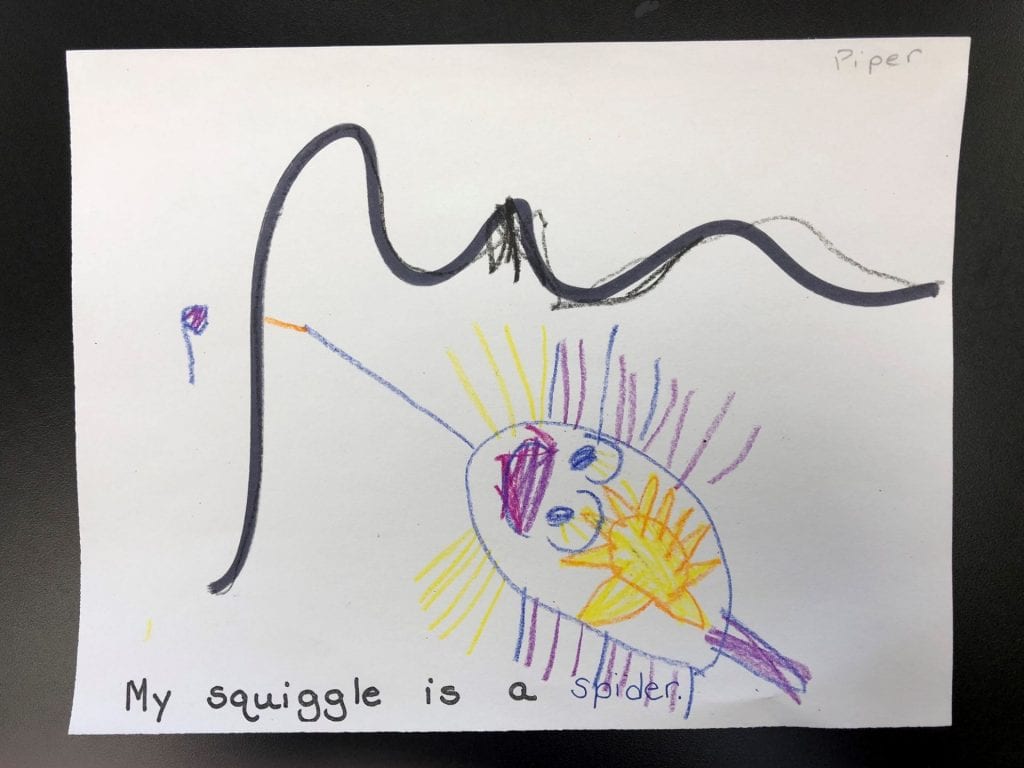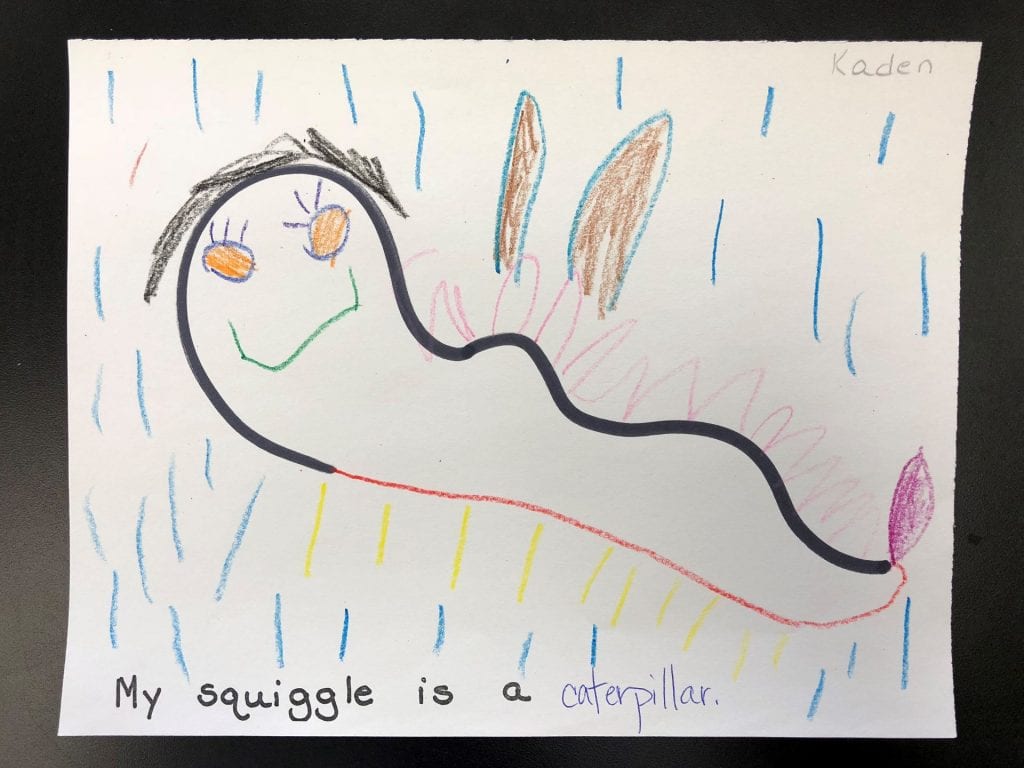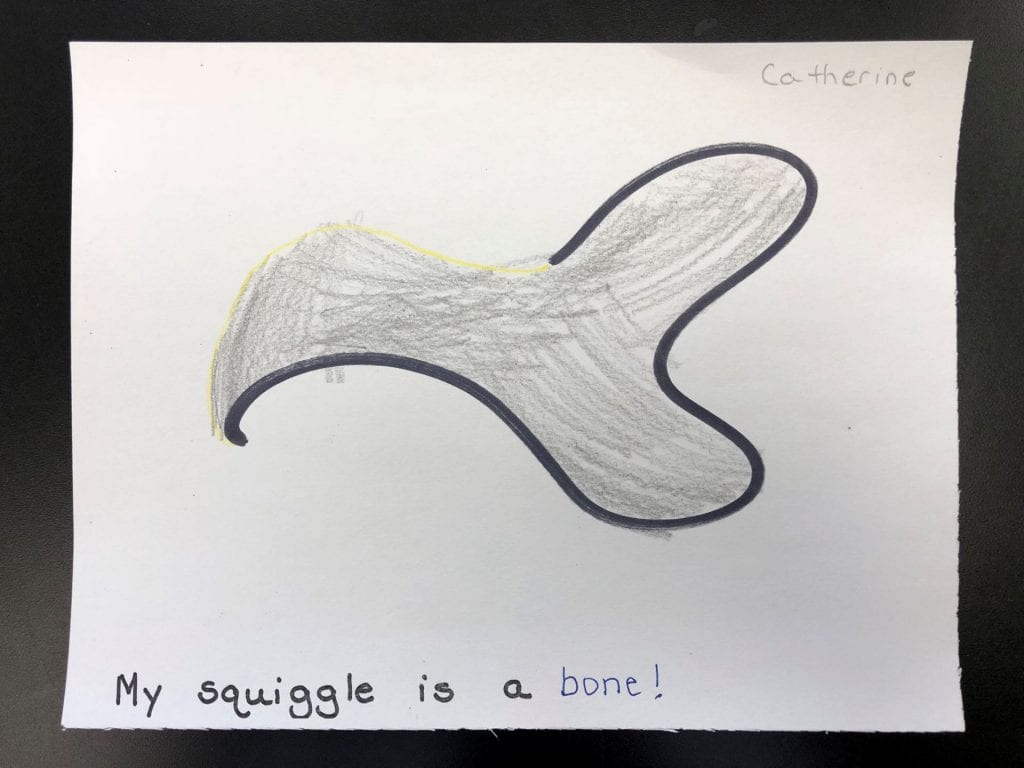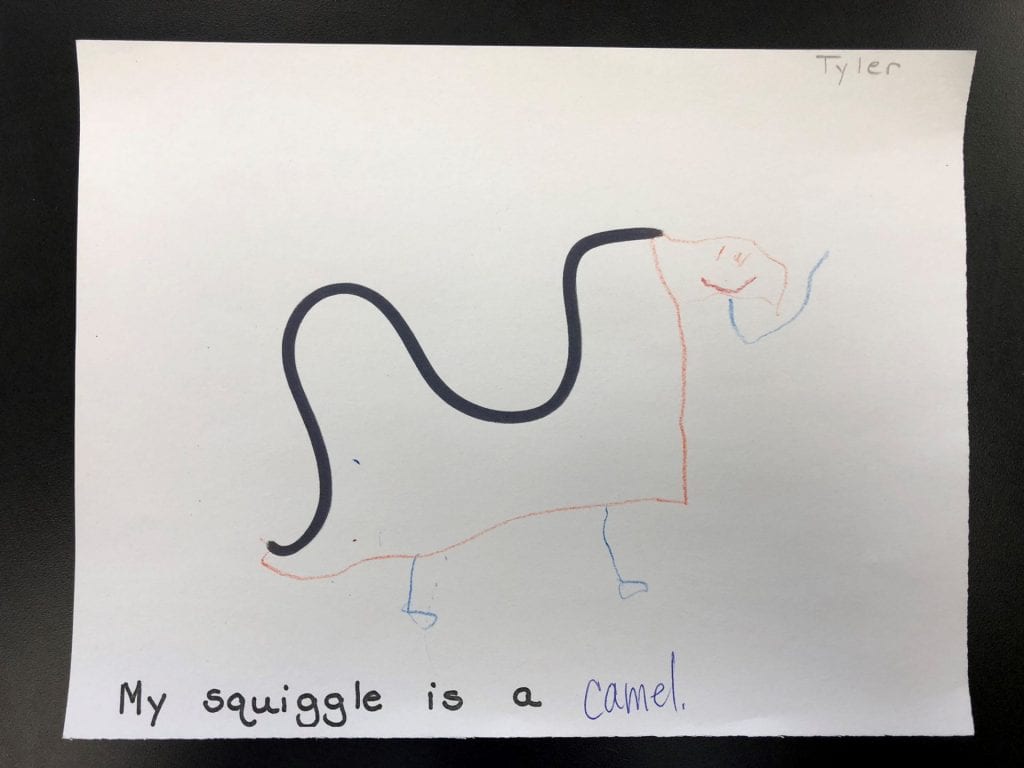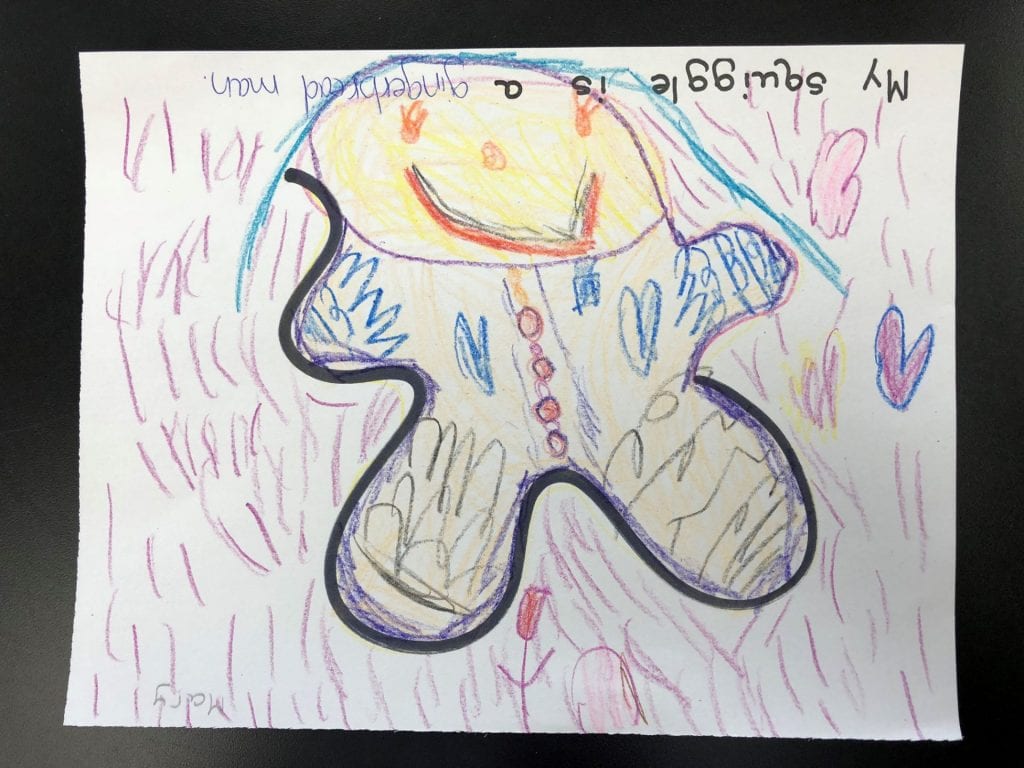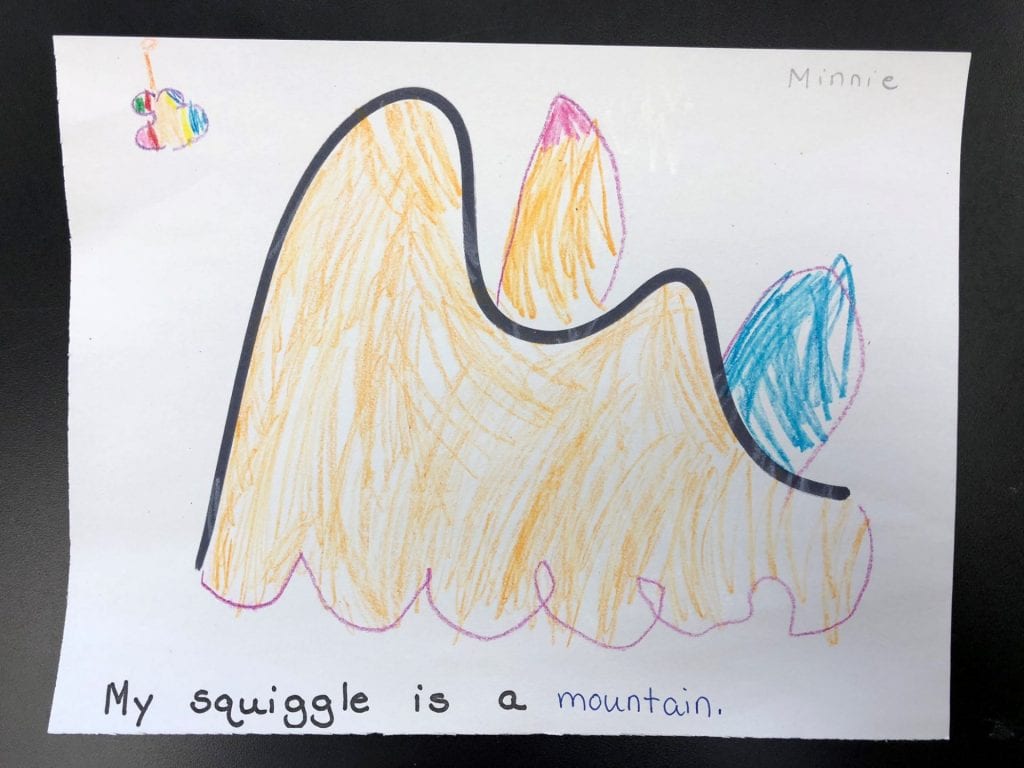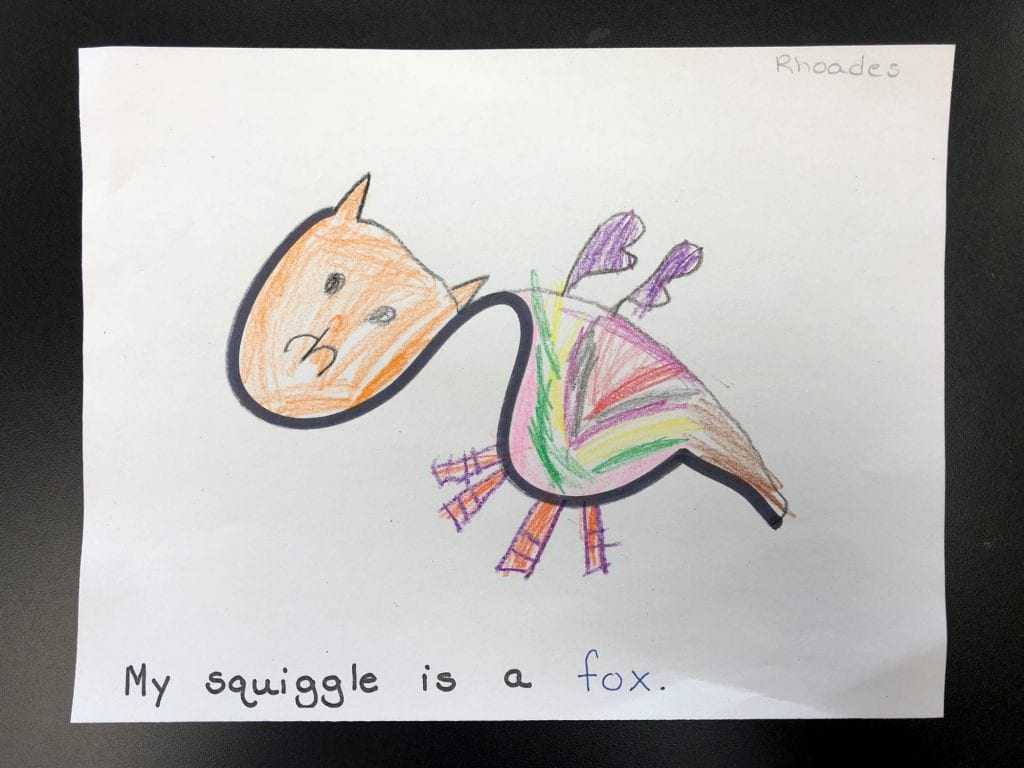I Am the Lucky One!
Family Fun Day at CNC
Rainbows
My kindergarten scientists are studying rainbows. Both water and prisms can open (refract) light to reveal the colors hidden inside.
We had fun using rainbow peeps. Rainbow Peepholes allow you to see secret rainbows that you normally can’t see. The special lenses in the middle of the peepholes are designed to refract light creating hundreds of rainbows as you gaze through them.
We ended this rainbow lab with an investigation. I dropped red, yellow, and blue food coloring into a pie plate filled with whole milk and the colors didn’t move. Why? Then, my scientists dipped a Q-tip into dish washing soap, placed it between the colors in the pan, and watched the colors explode! Why did that happen? How did we make green, purple, and orange?
Click here to learn more about this experiment. Try this at home!
Thinking Like a Scientist
I encourage my scientists to ask questions about what they wonder. Everything about this note, left on my desk, makes me happy!
Birds don’t get shocked when they sit on electrical wires because they are not good conductors of electricity. Birds do not offer electrons an easier route than the copper wire they’re already traveling along. As a result, the electricity bypasses the birds and keeps flowing along the wire instead.
Moon Phases
Magnet – Part Four
A paper clip cannot attract another paperclip, or can it?
My first grade scientists discovered that it’s possible to make a temporary magnet if you rub a paper clip or a nail in one direction alongside a bar magnet.
We also used a bar magnet and a case of iron filings to see the magnetic field. Magnets are strongest at their poles.
I spent a few moments sharing some magnetic manipulatives that can be found in the lab.
Sticky Stones
Magnetic Putty
Magnetic Accelerator
Magnetic Levitator
Then it was time to investigate a new force that can also repel and attract – static electricity. Everyone was fascinated with these fun fly sticks. Click here to learn more.
After rubbing the Styrofoam plate with a piece of wool, it seemed to stick to our hands like magic and we could move the Styrofoam balls without touching the tubes.
Atlanta Area Summer STEM Camps
I received an email with a list of summer STEM camps in the Atlanta area. I am not endorsing any of these, but it looks like a fun list to explore. Click here for the list.
There are also several STEM camps at KRCS this summer. Click here for more information.
Germs
After a discussion about germs (bacteria and viruses), how they are passed, and where they are found, I sent my second grade scientists out to swab germ hot spots around school. When they returned, they gently rubbed their Q-tips over agar in Petri dishes. Click here to watch a child-friendly video about viruses. Hope this lesson helps us to have a healthy school year!
Watch the video to learn more about this investigation:
Check out some of our Petri dishes below. Note: We did not swab the hand dryer in the bathroom. We held the Petri dish under the dryer to see if it would blow germs into it.
After we swabbed the Petri dishes, we completed an investigation to demonstrate the importance of using soap during handwashing. We dropped pepper (germs) in water inside small Petri dishes. We placed a clean Q tip inside the Petri dish, but the pepper did not move. Then, we dipped the Q tip in soap. This time when we touched the pepper, it moved quickly to the sides of the dish. The soap broke the surface tension of the water.
Squiggles
PreK physicists reviewed the various ways objects move and that movement begins with a push or a pull. Then, we pushed and pulled ribbon dancers to make them move both slow and fast and high and low. We made shapes and heard them whip. My youngest scientists worked on large muscle development when they crossed their midlines and changed hands.
After reading Squiggle, we moved to the lab tables and used our imaginations to change our squiggles into something else. This activity made us think divergently which is a thought process used to generate creative ideas by exploring many possible solutions. I love teaching with a cross-curricula approach!

